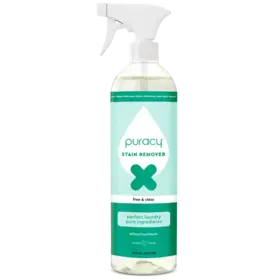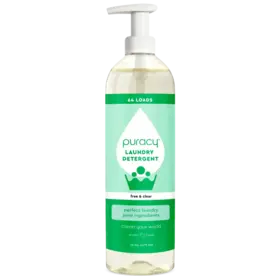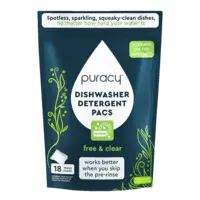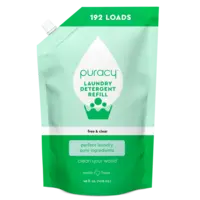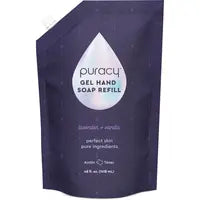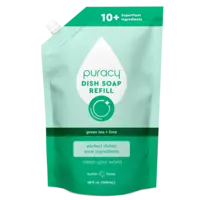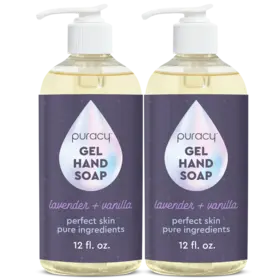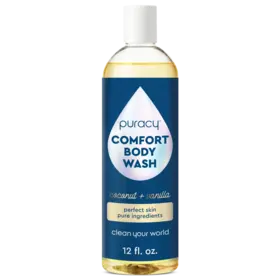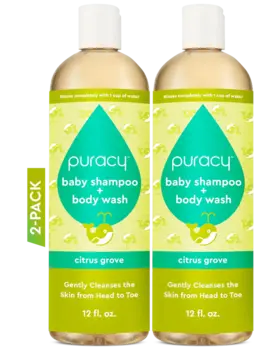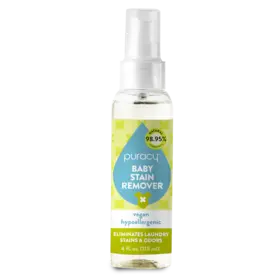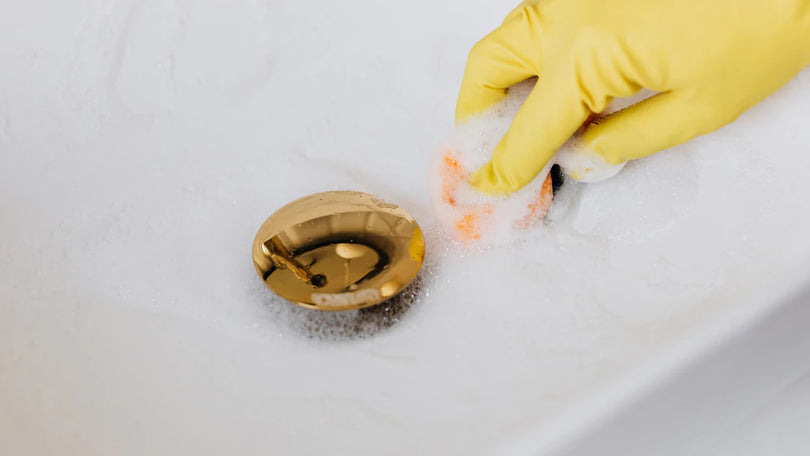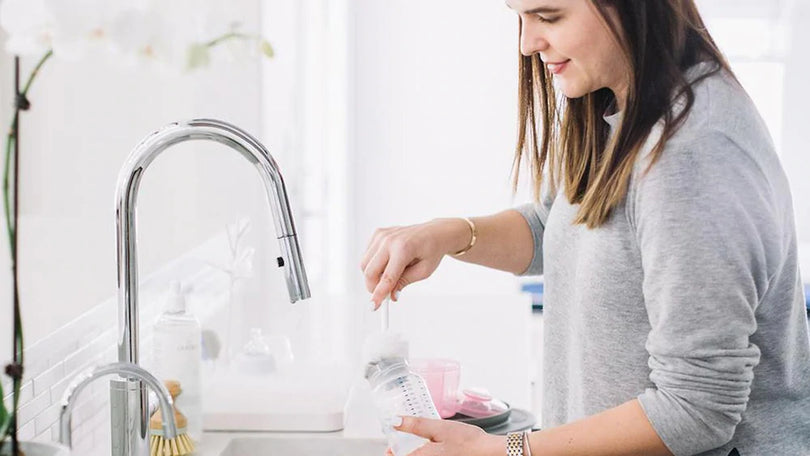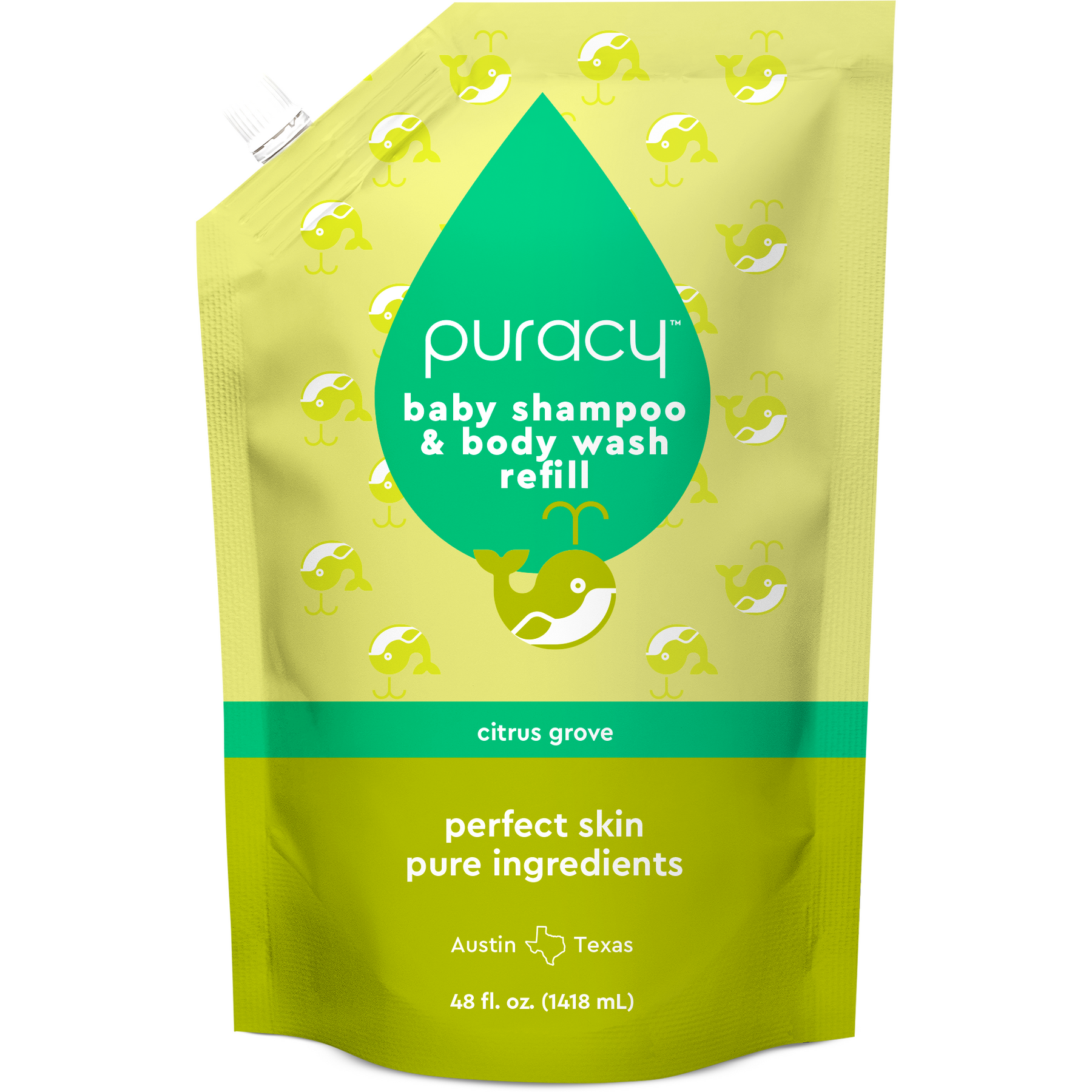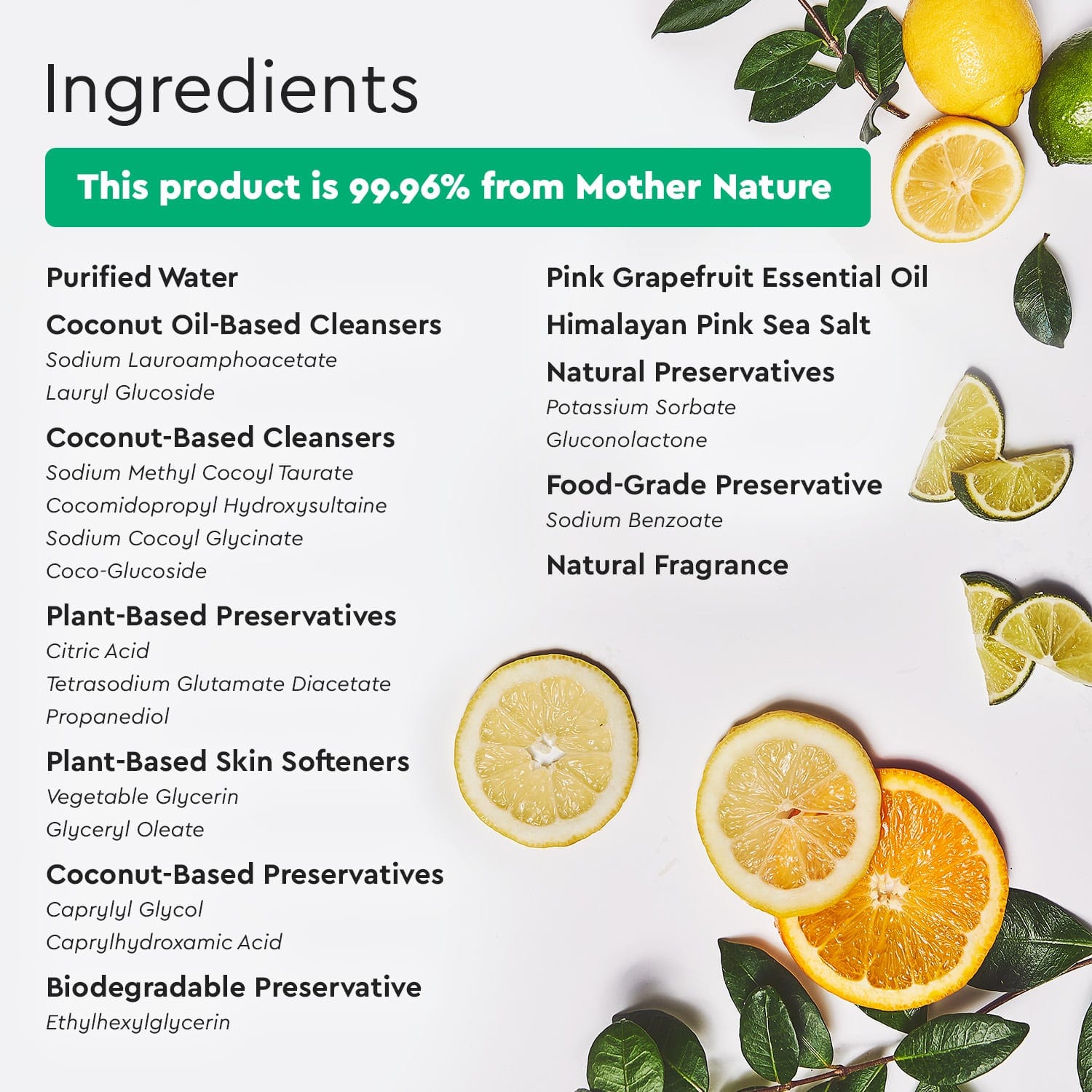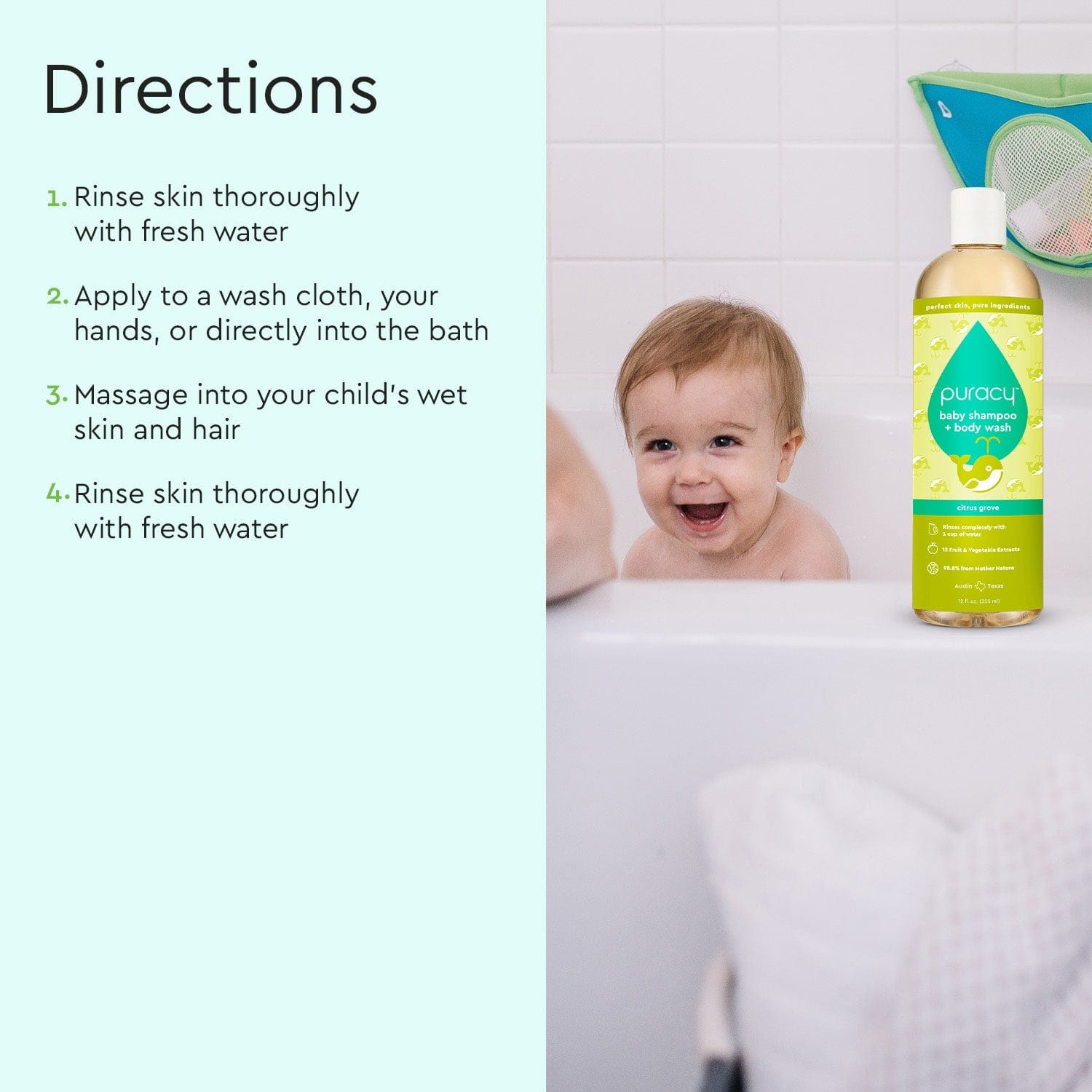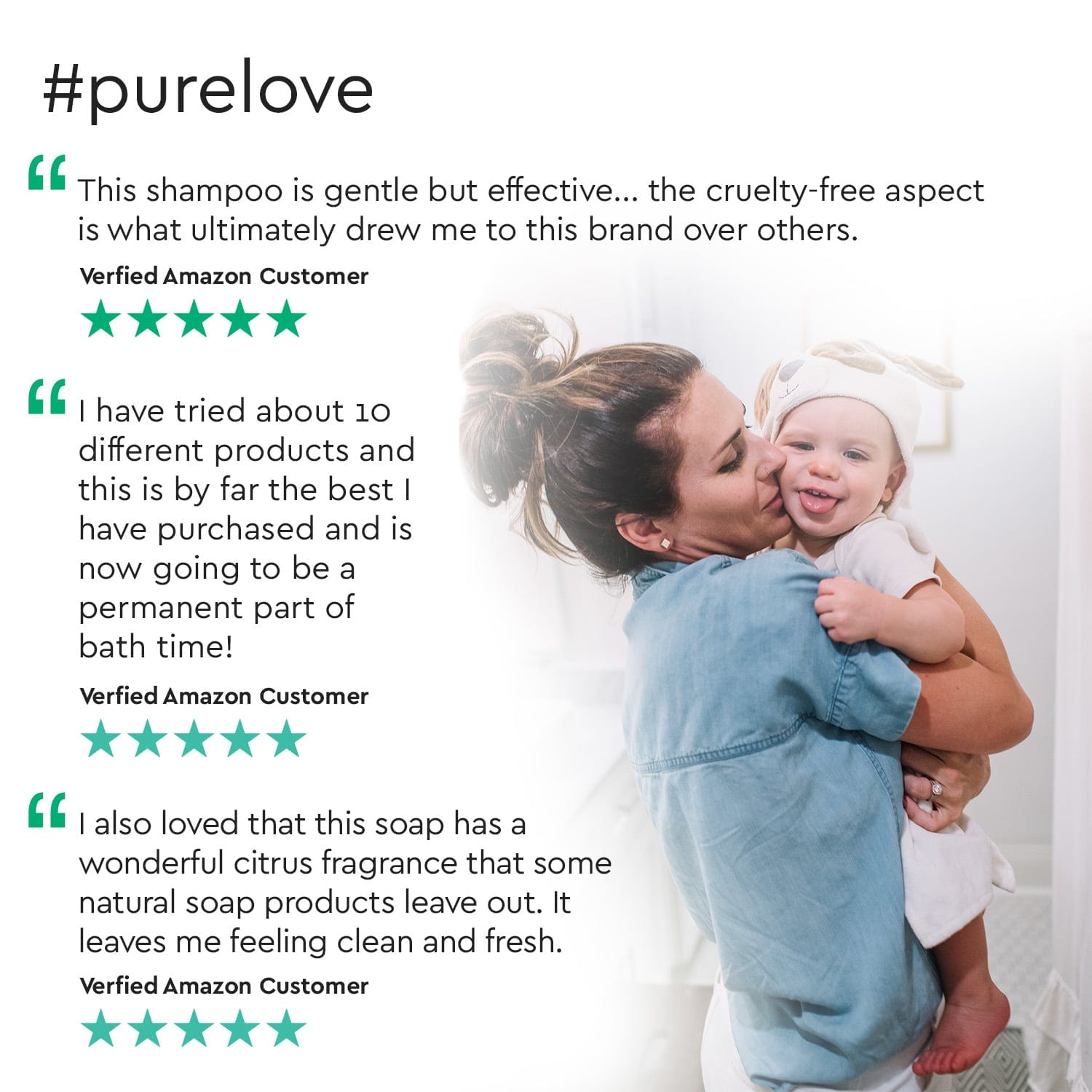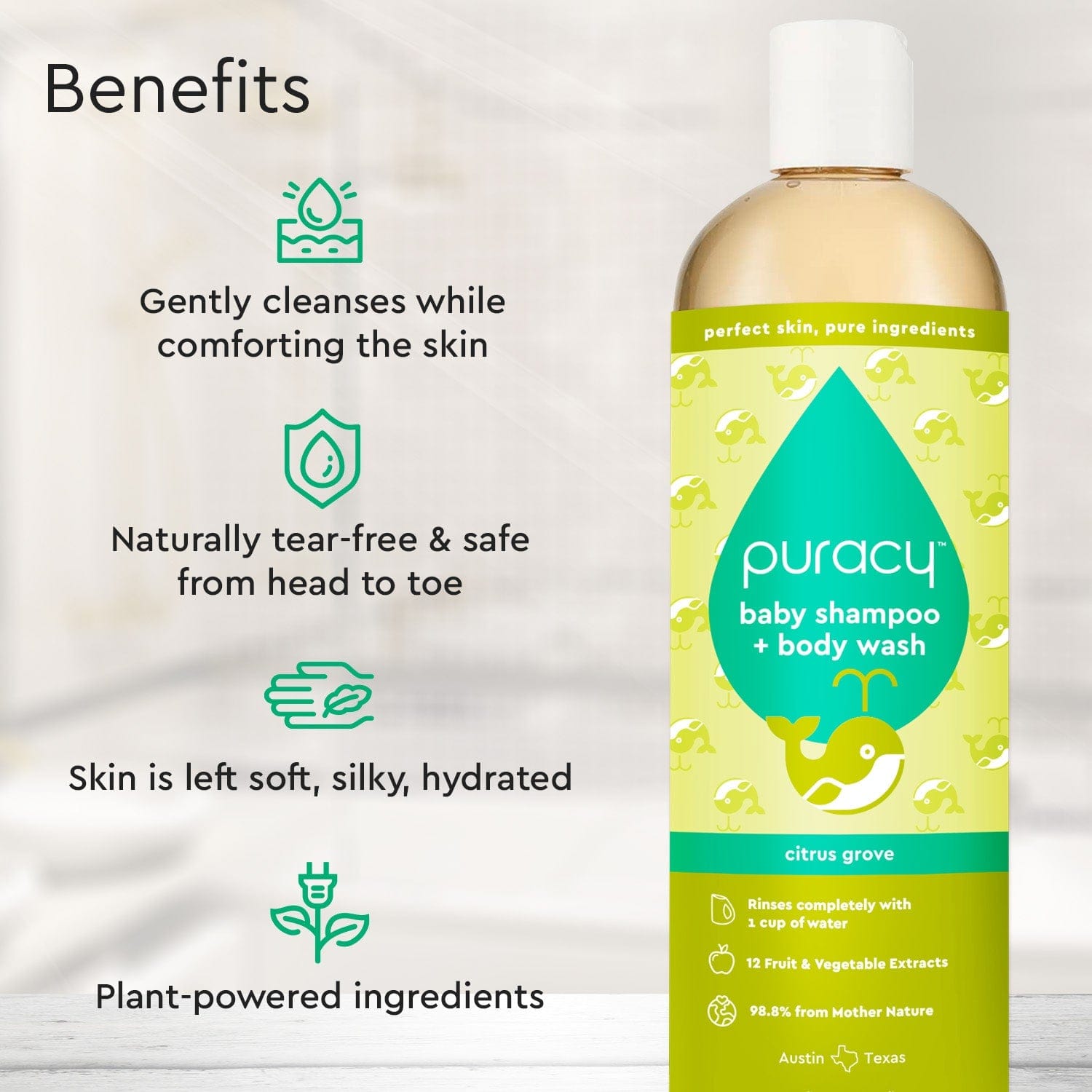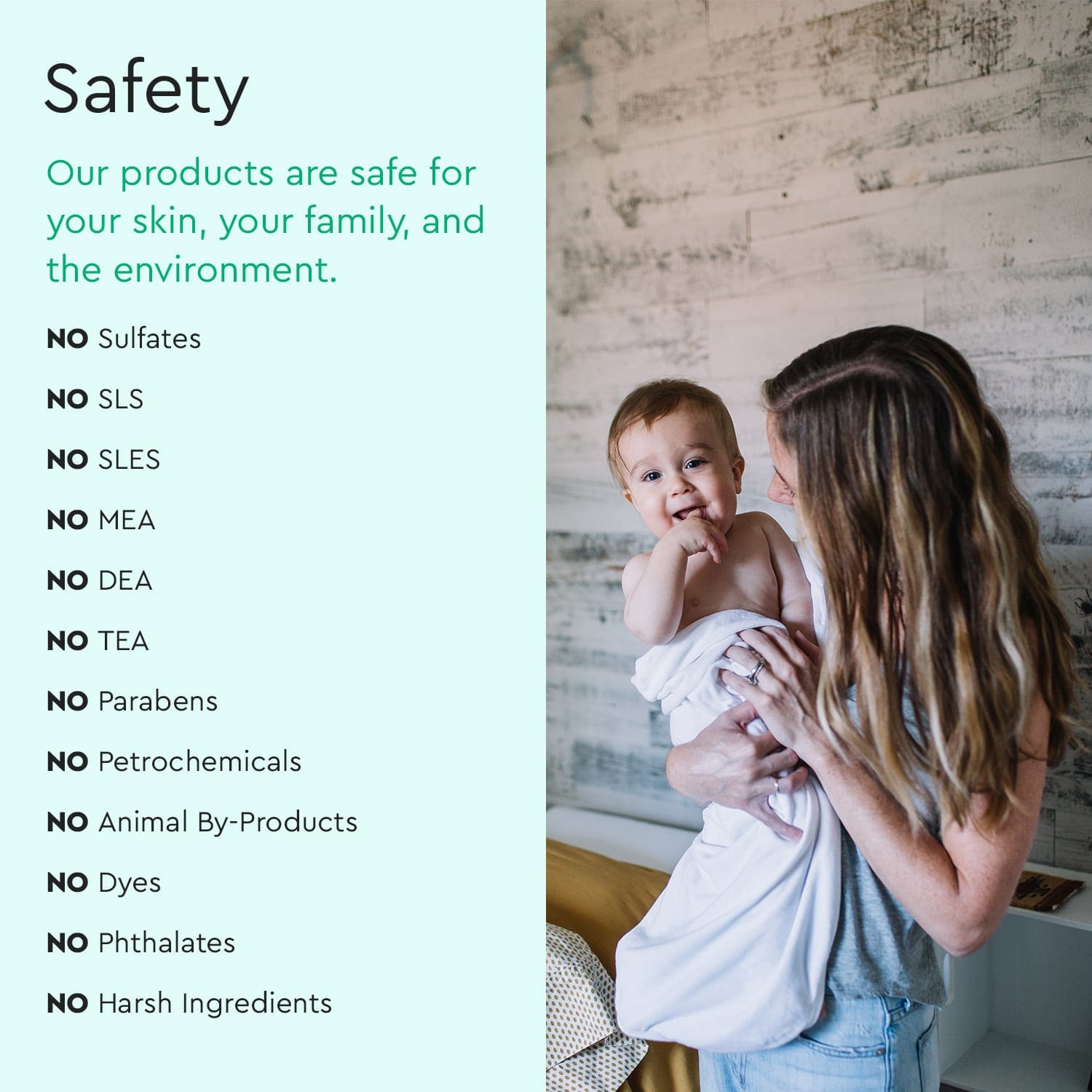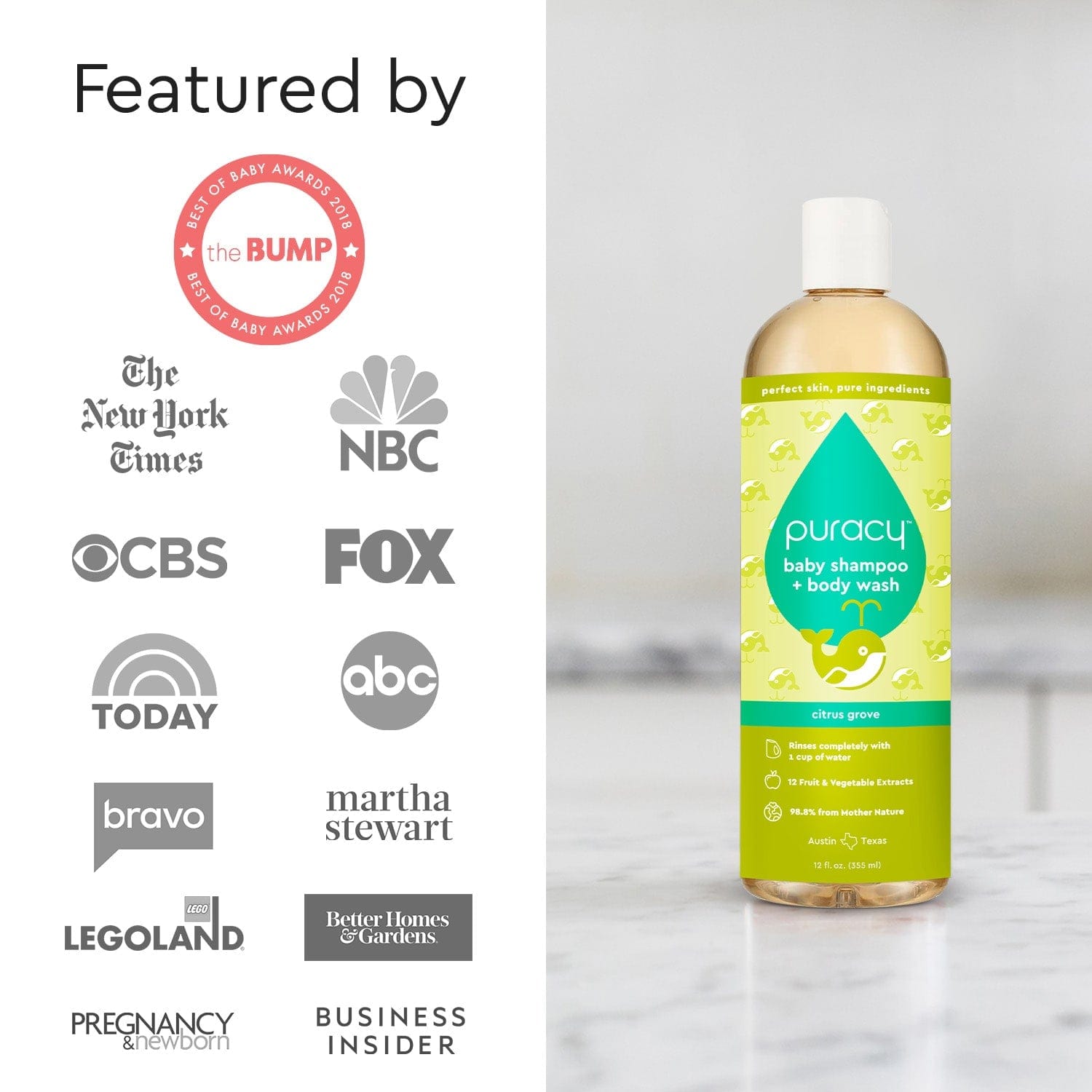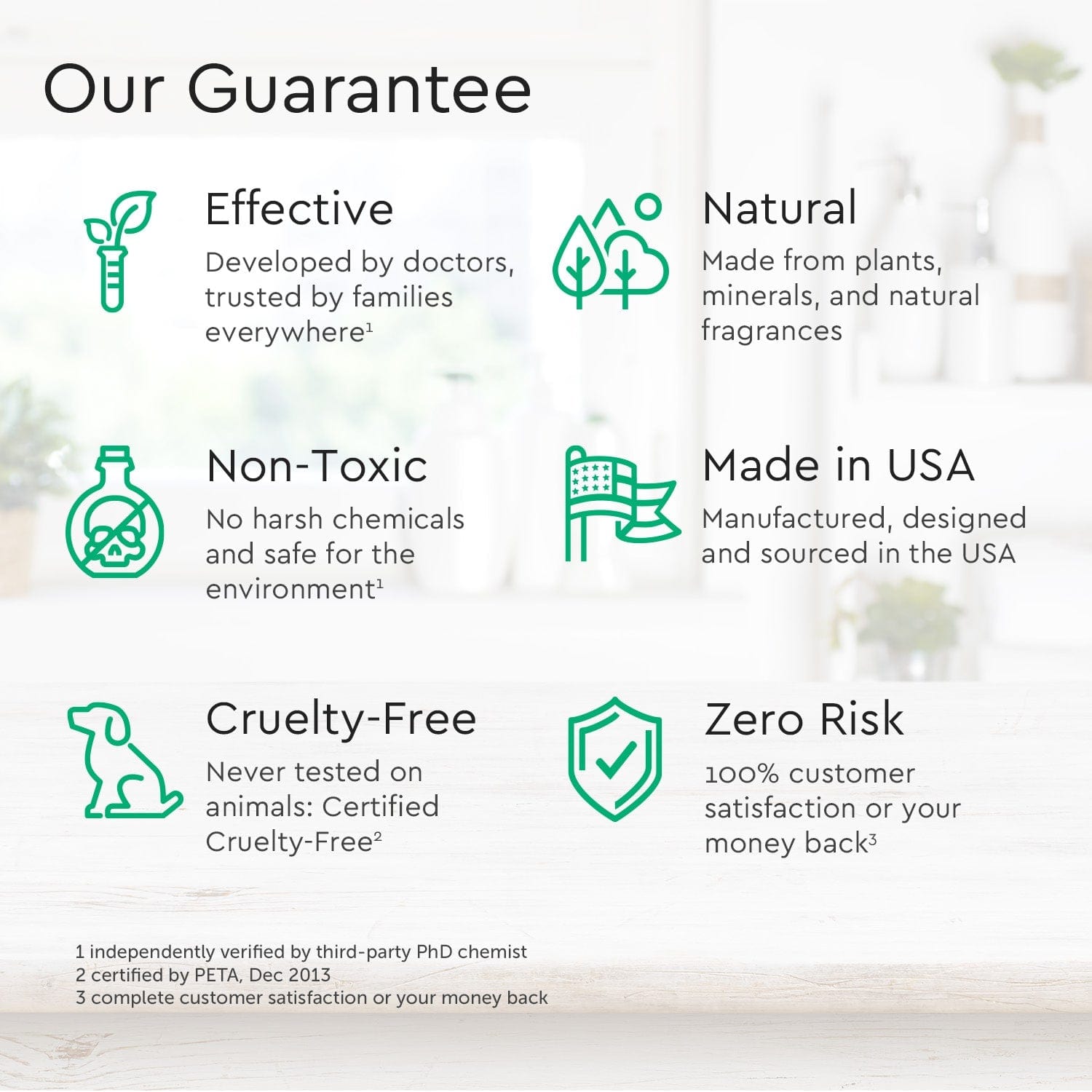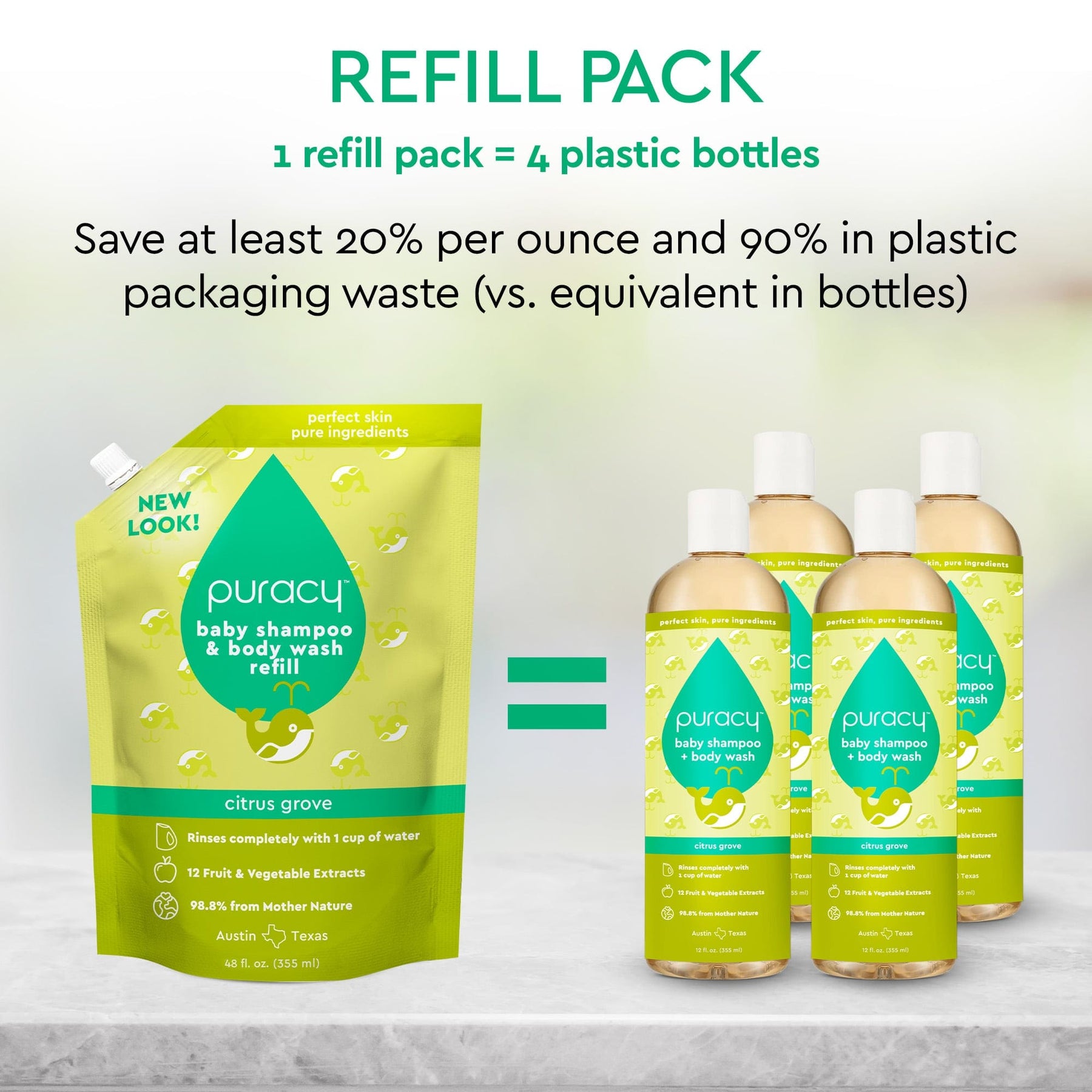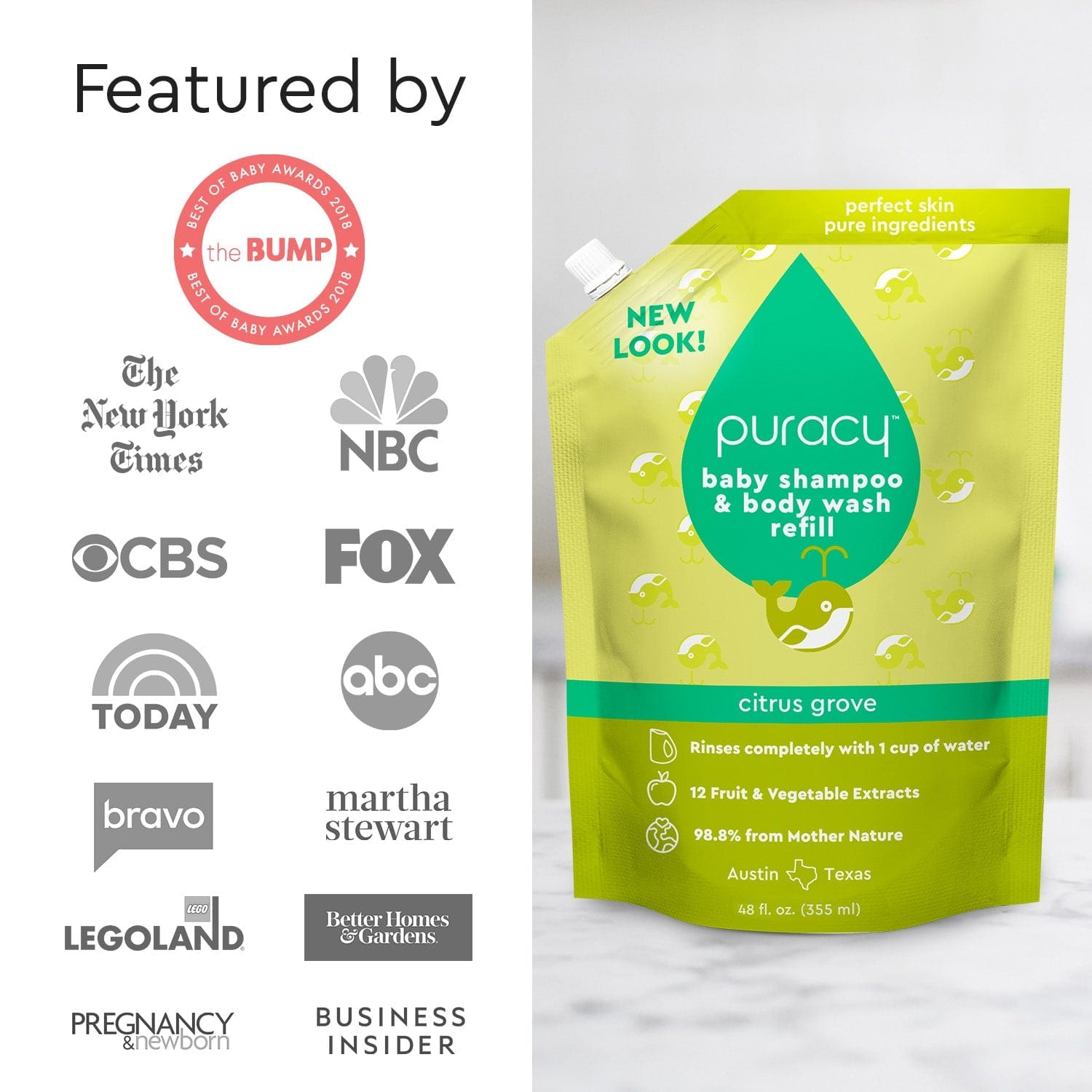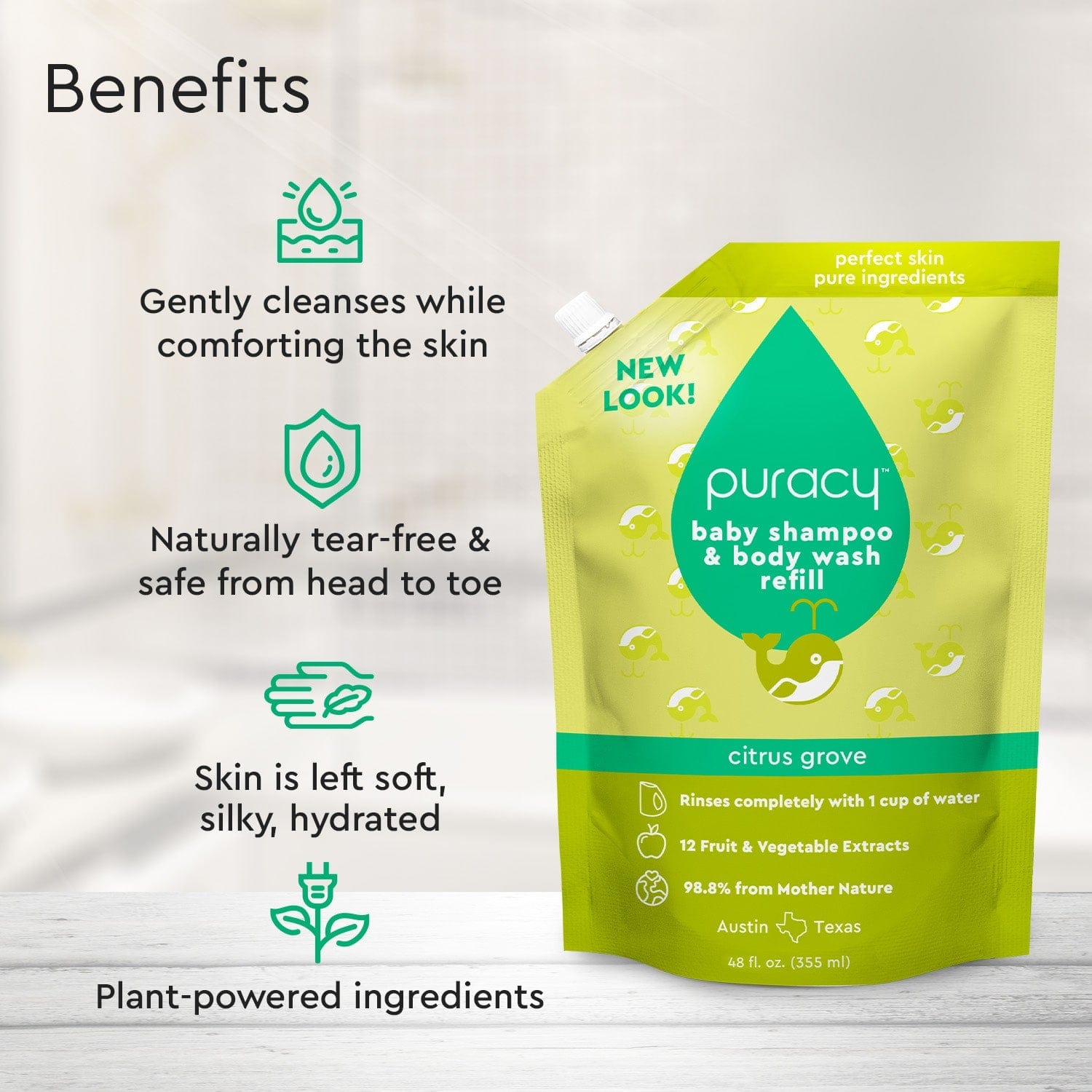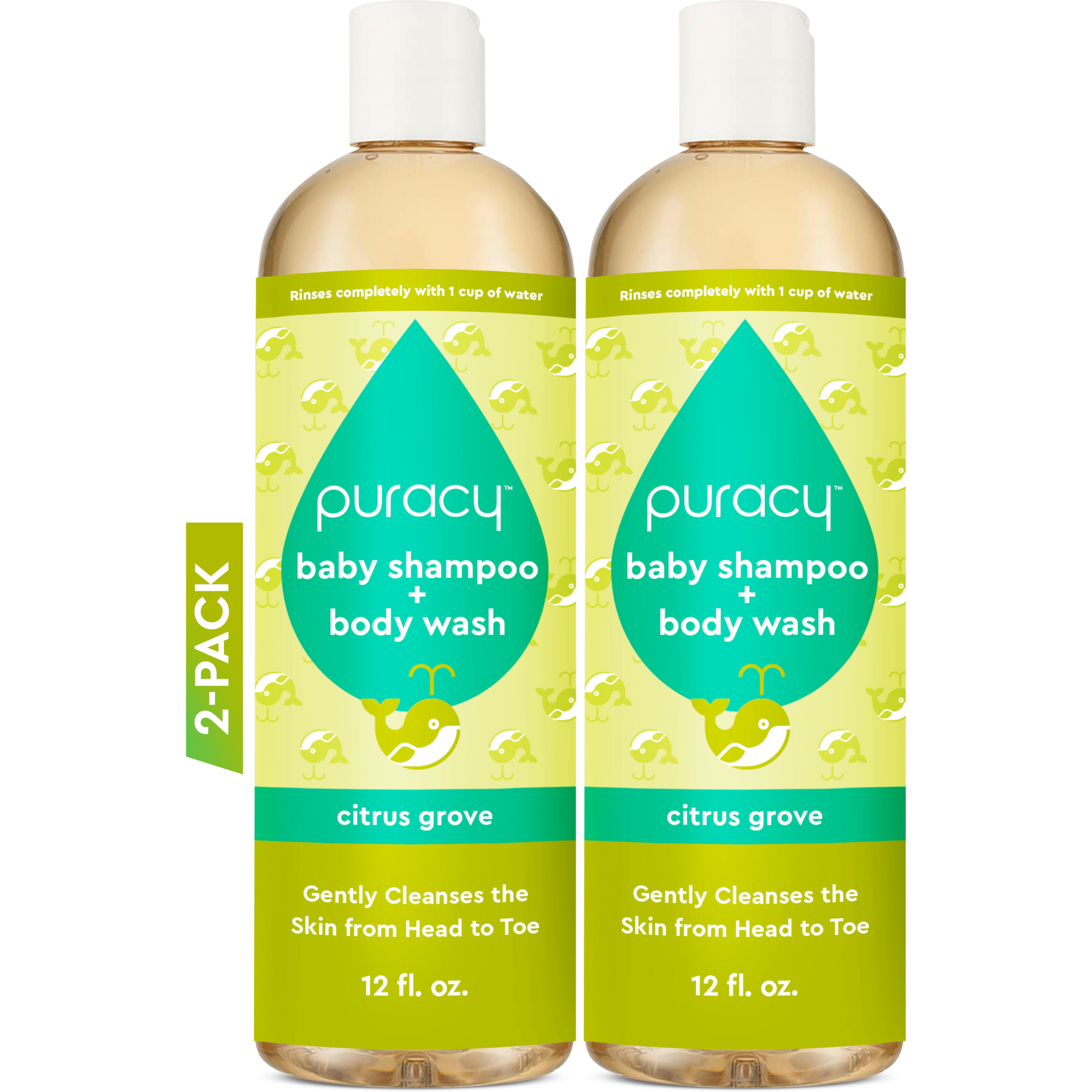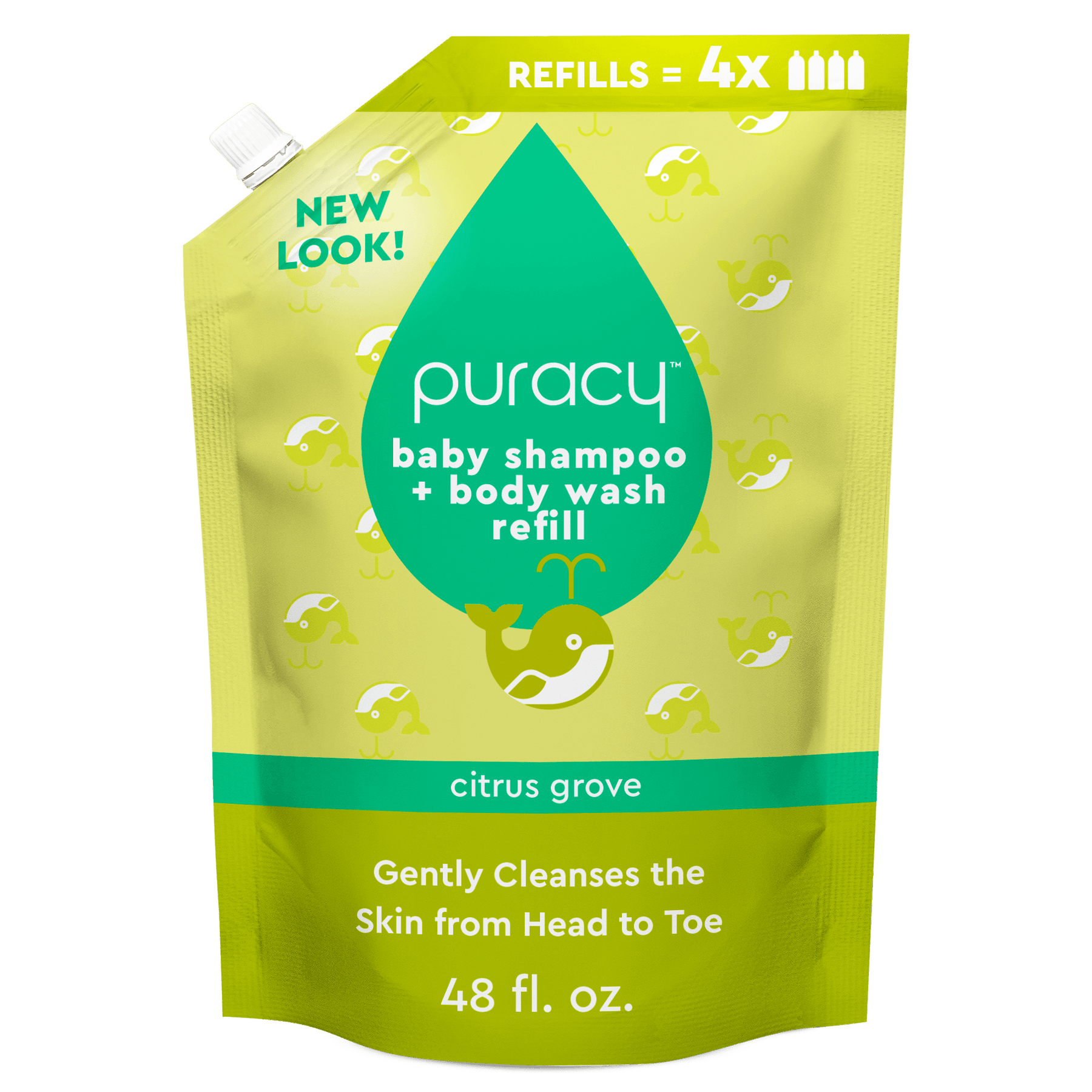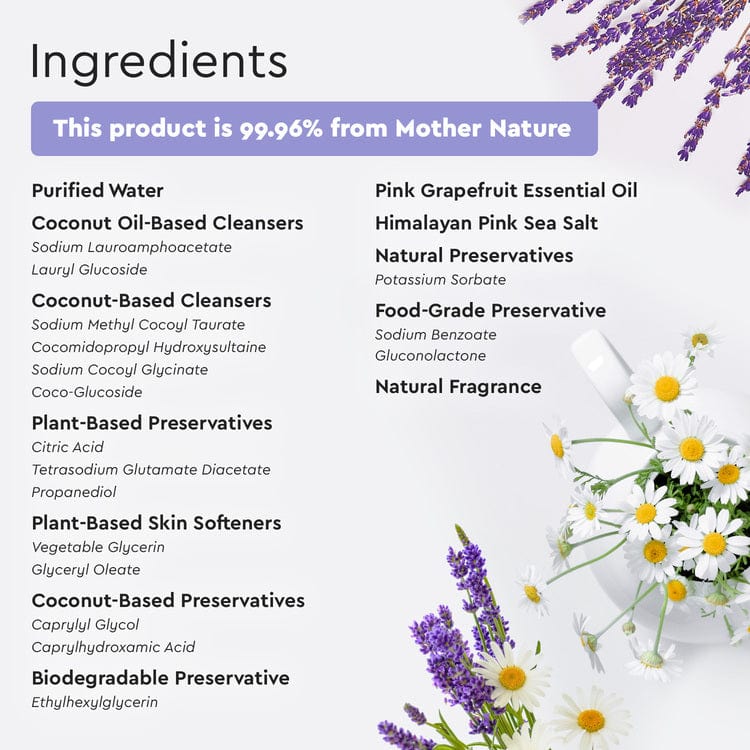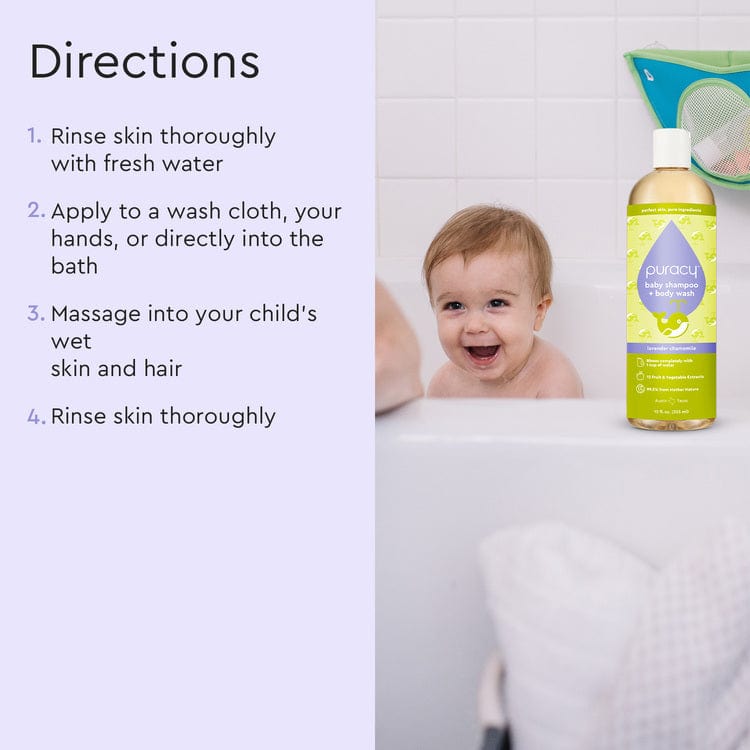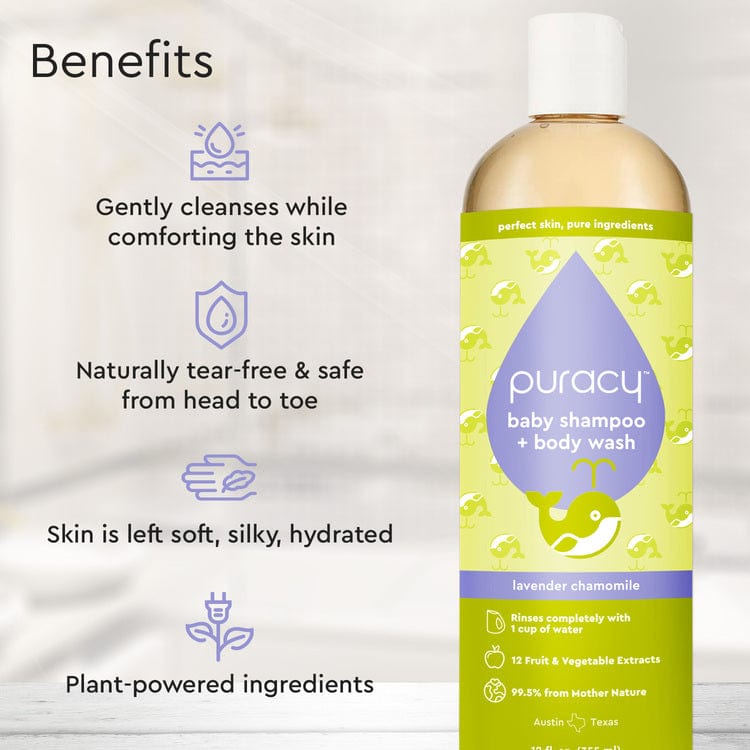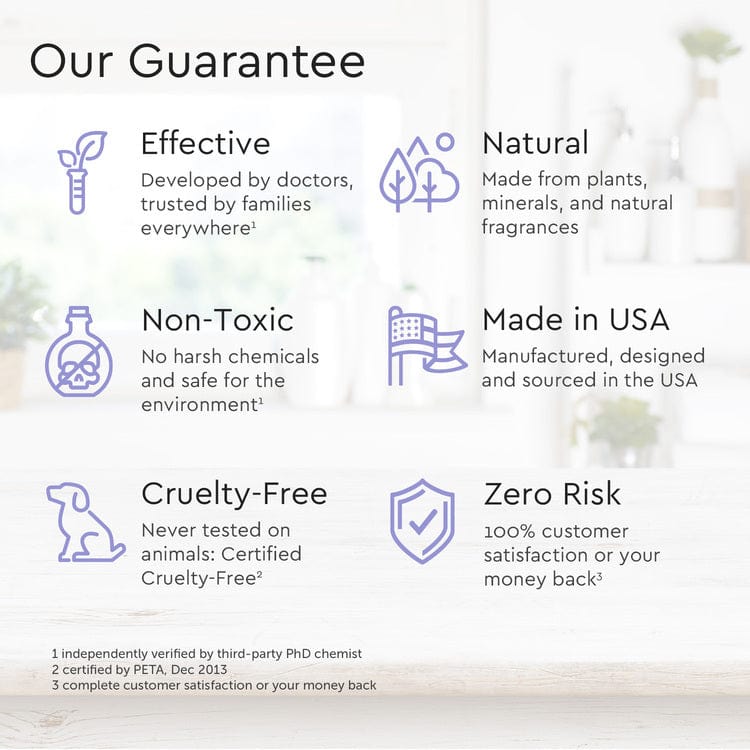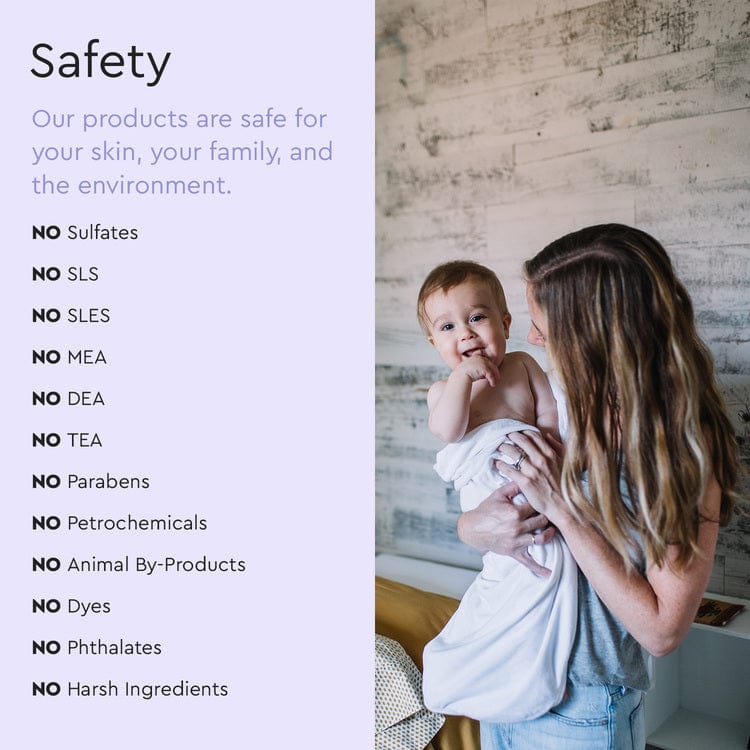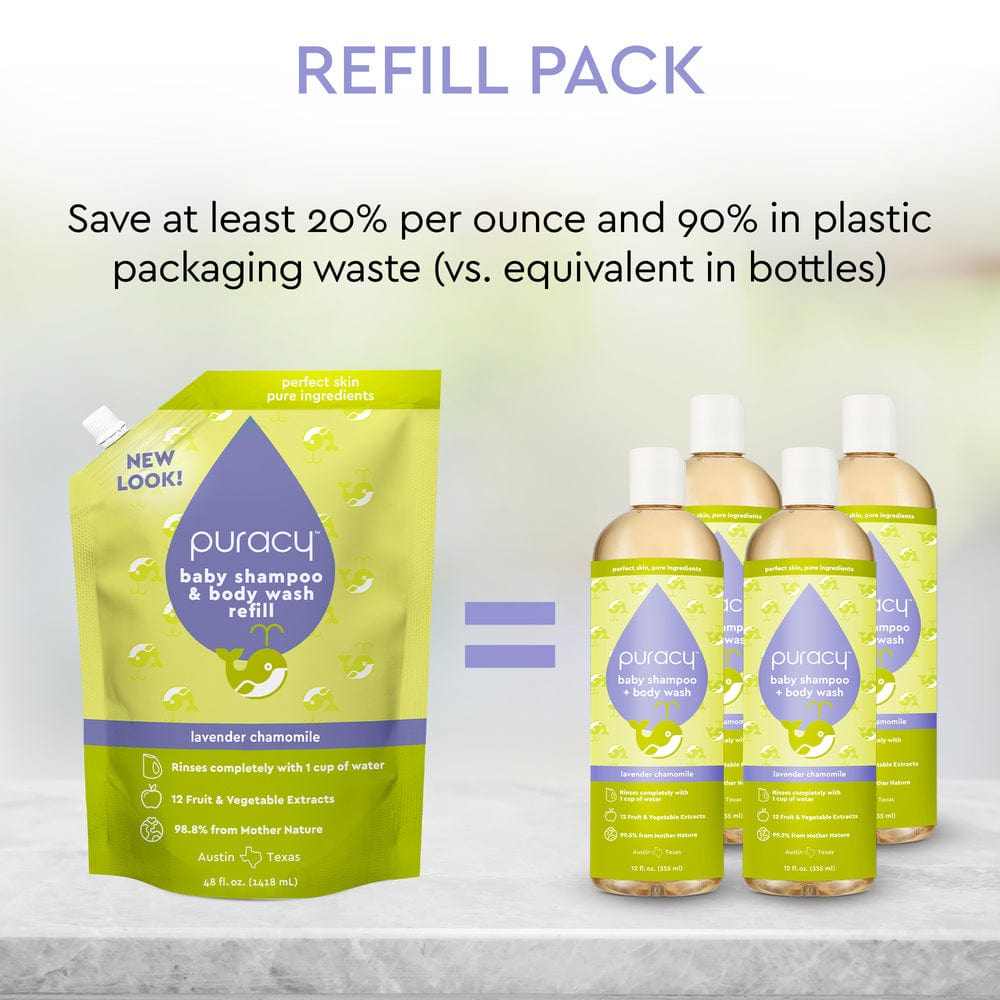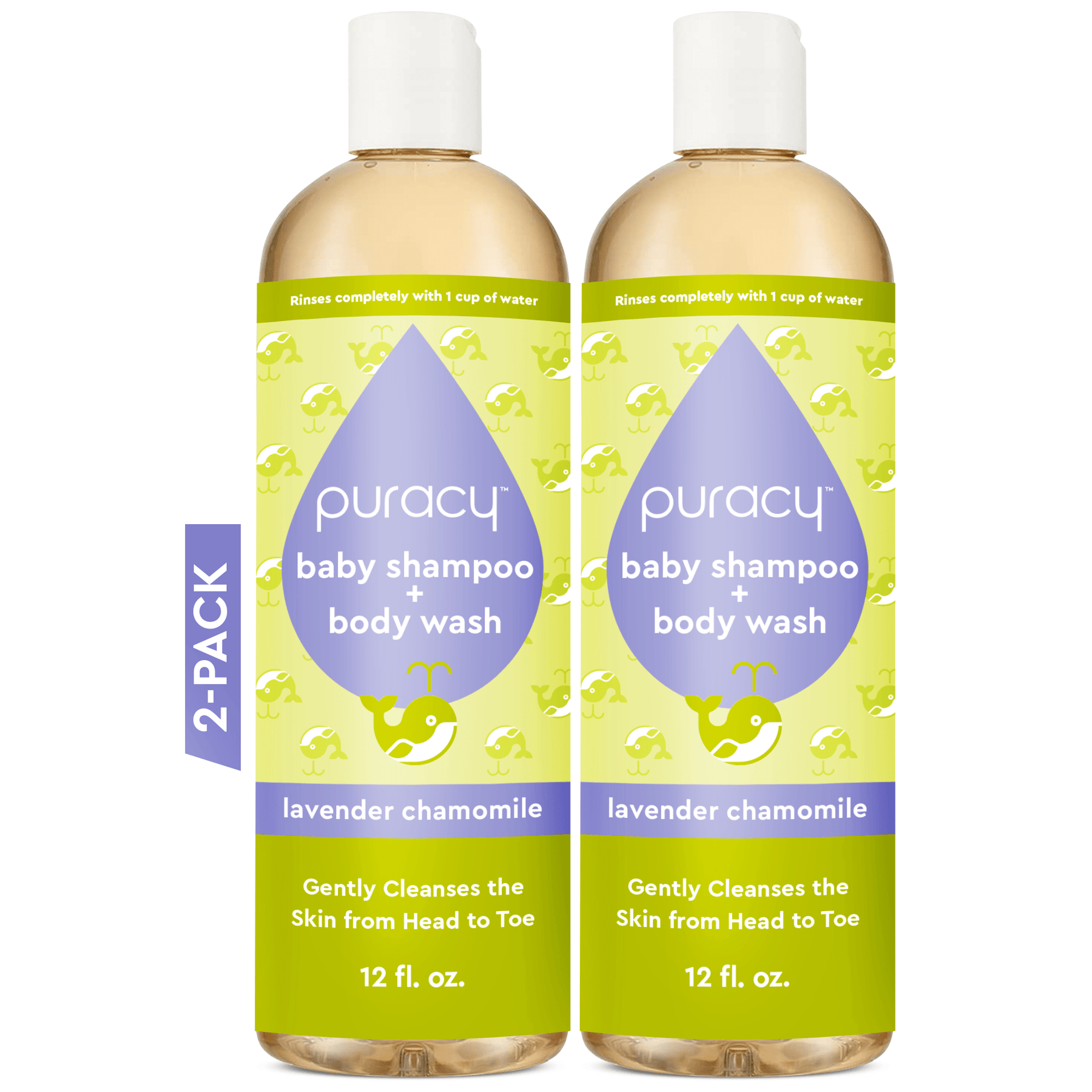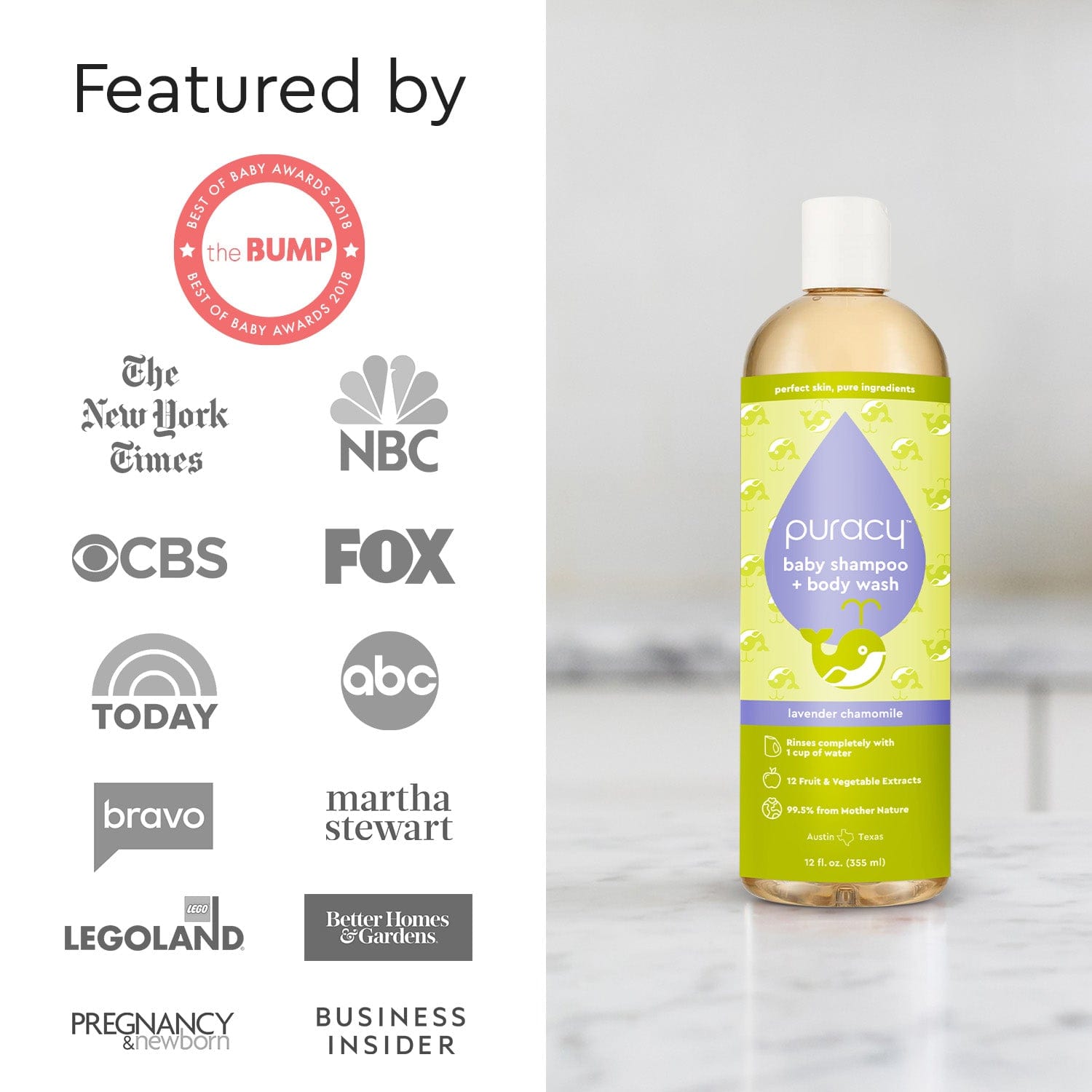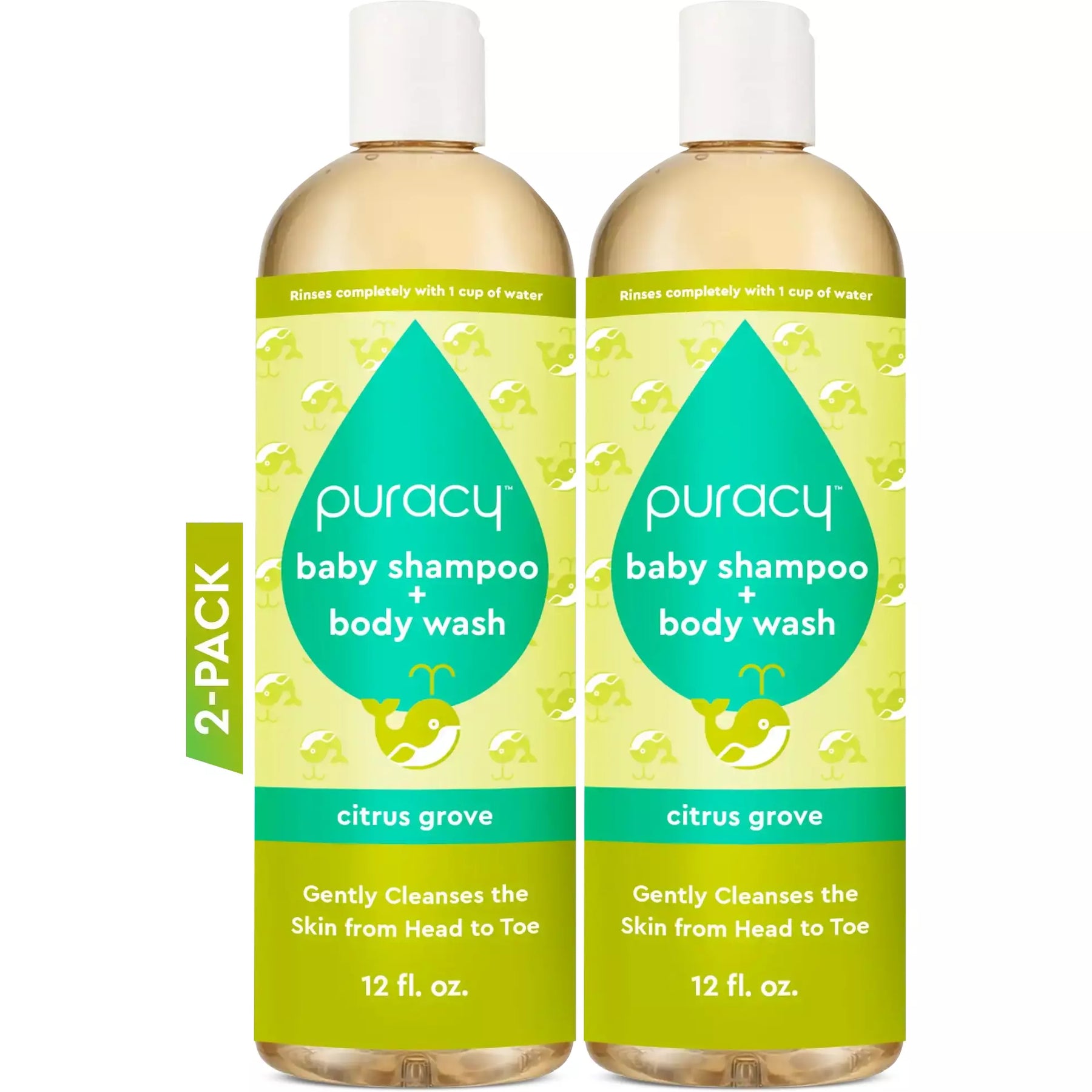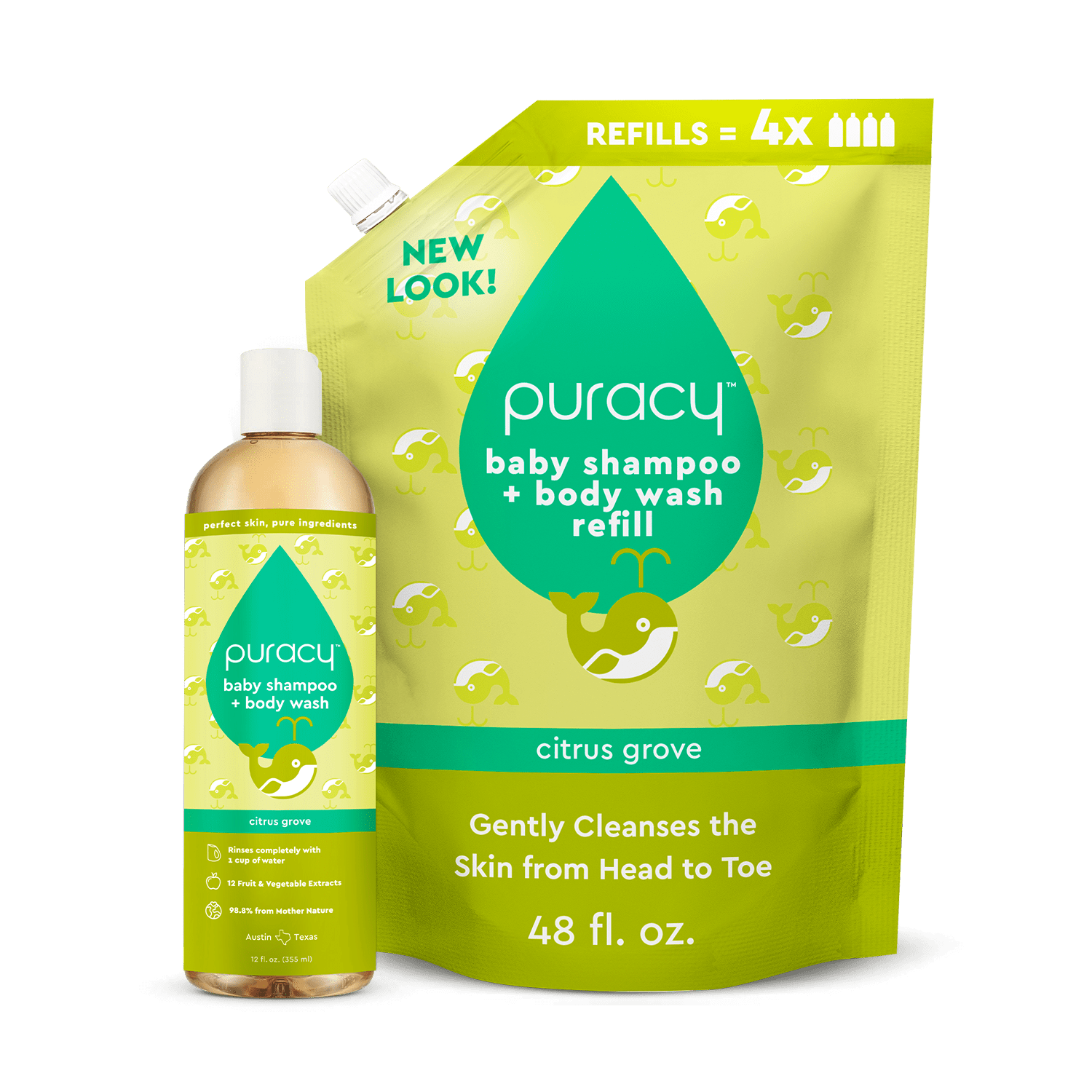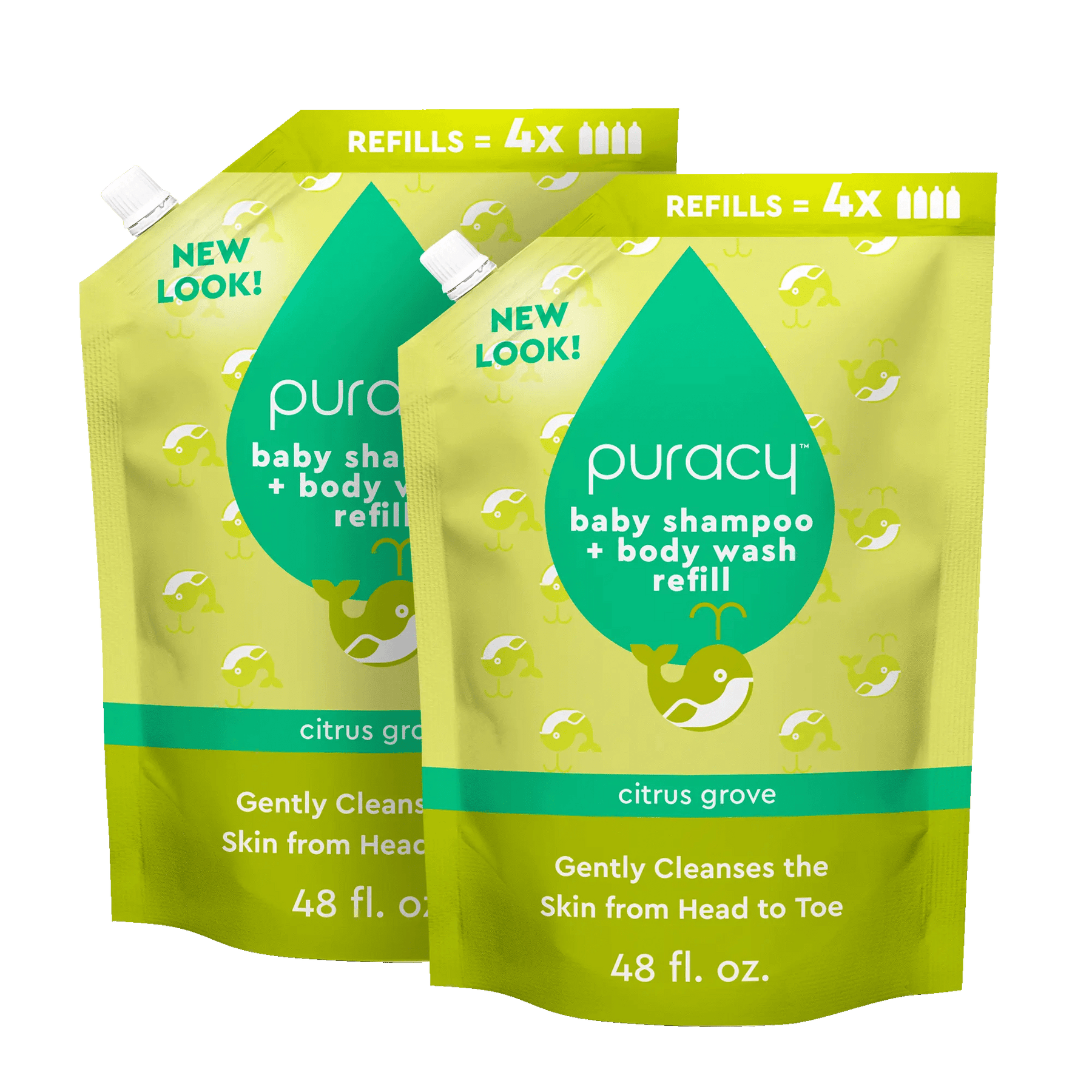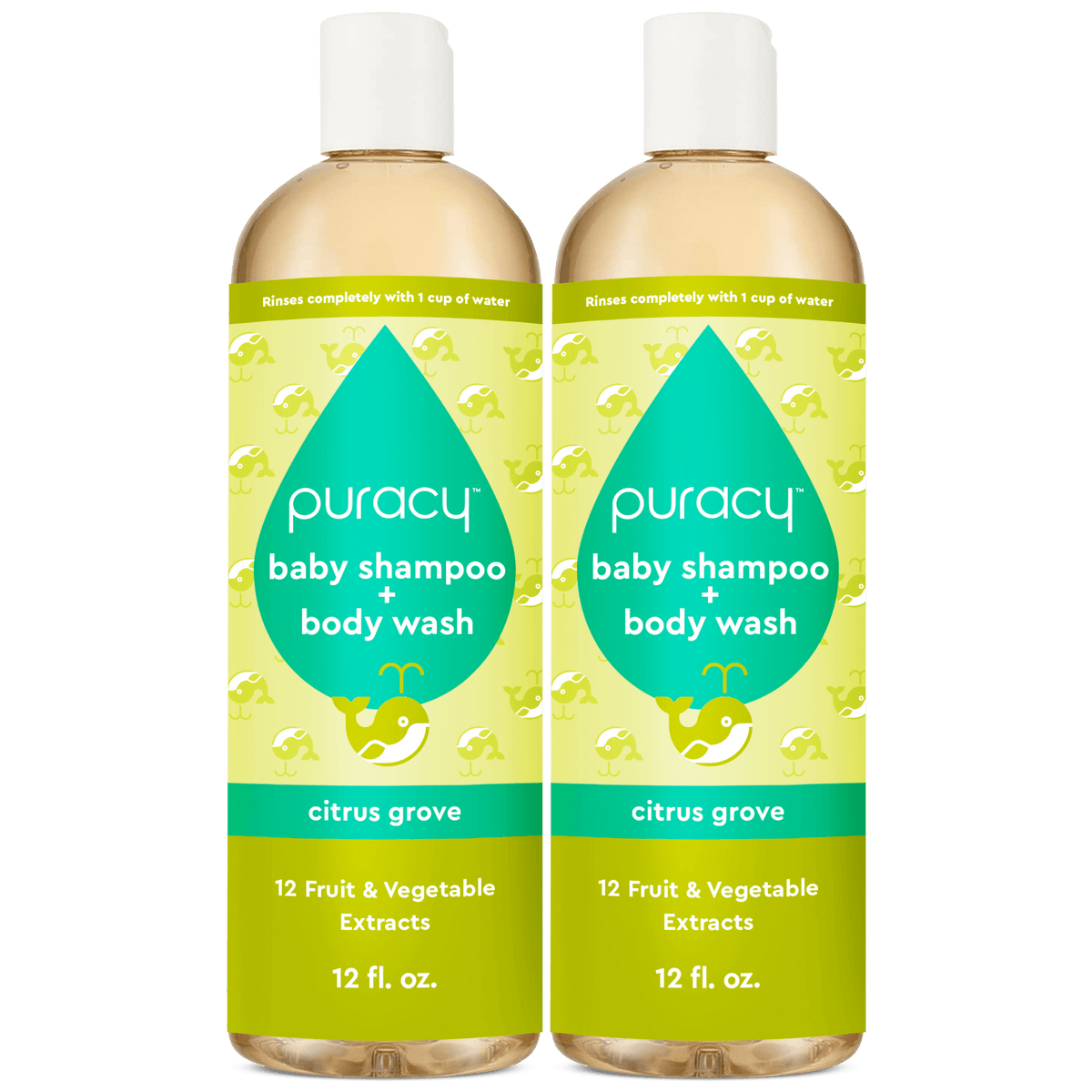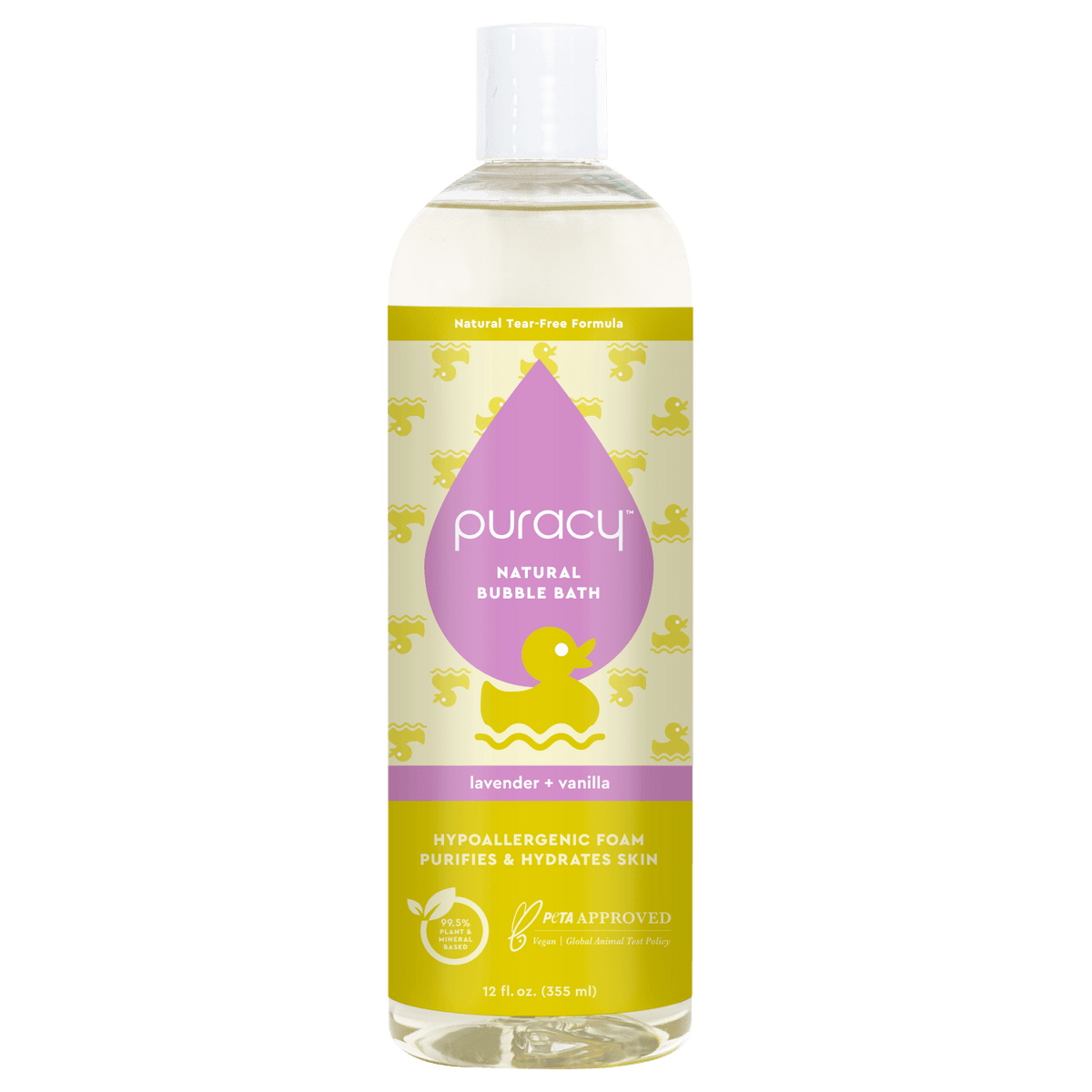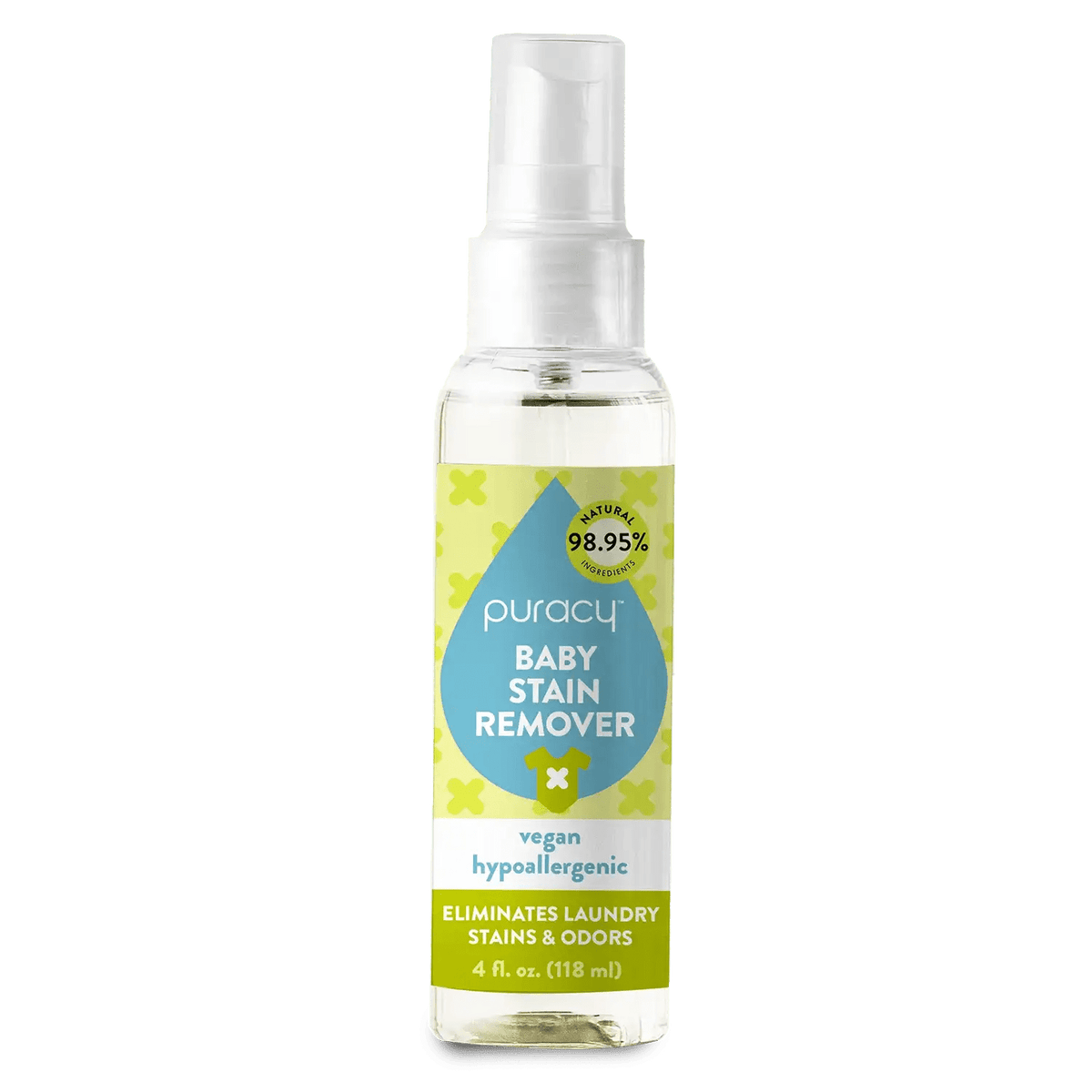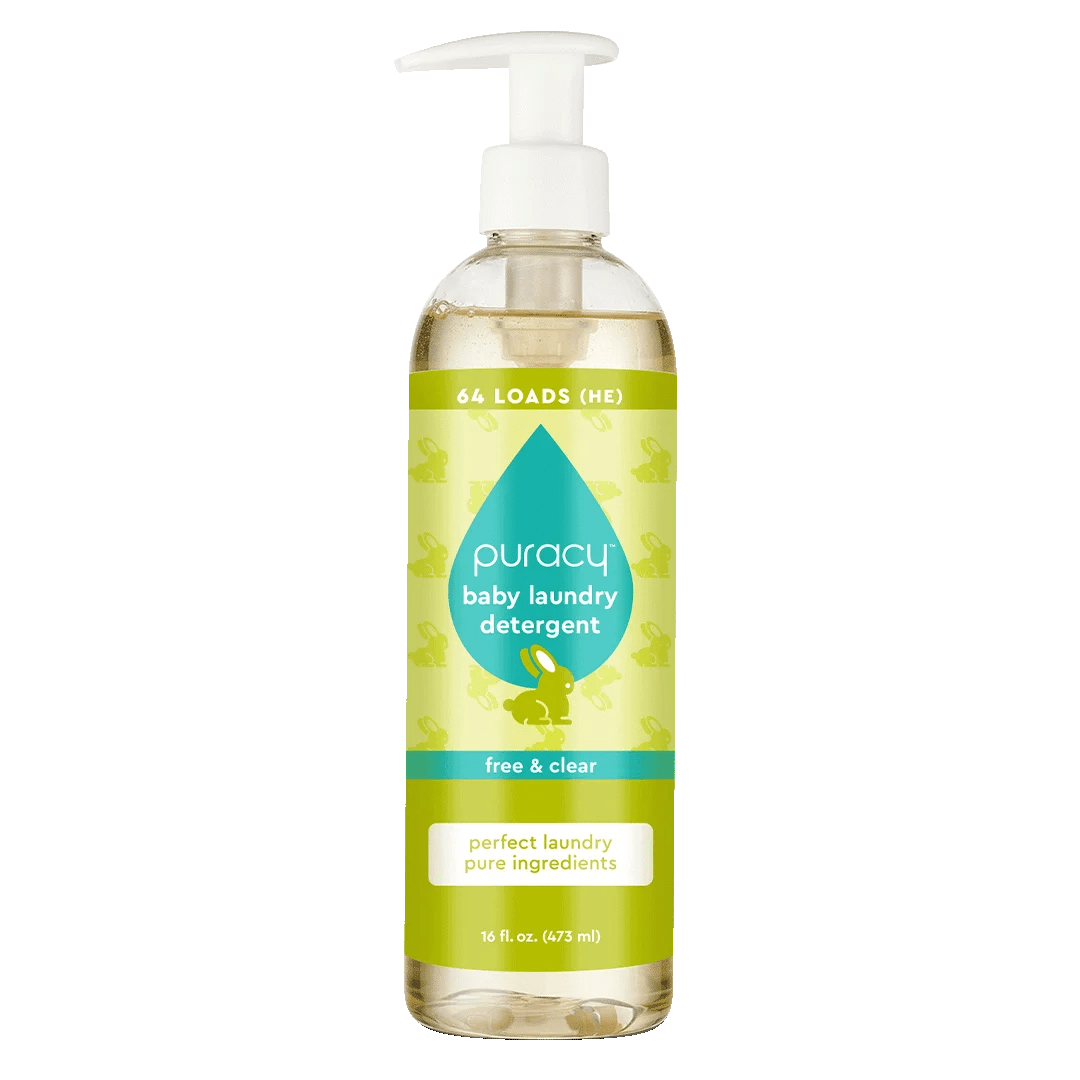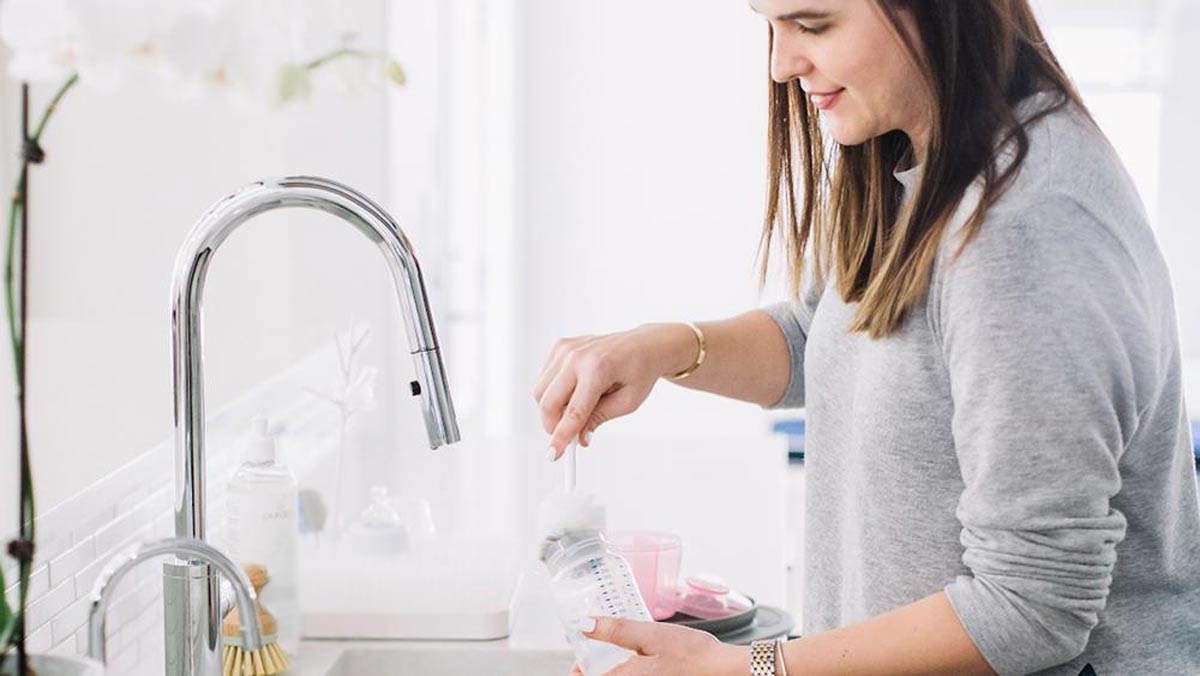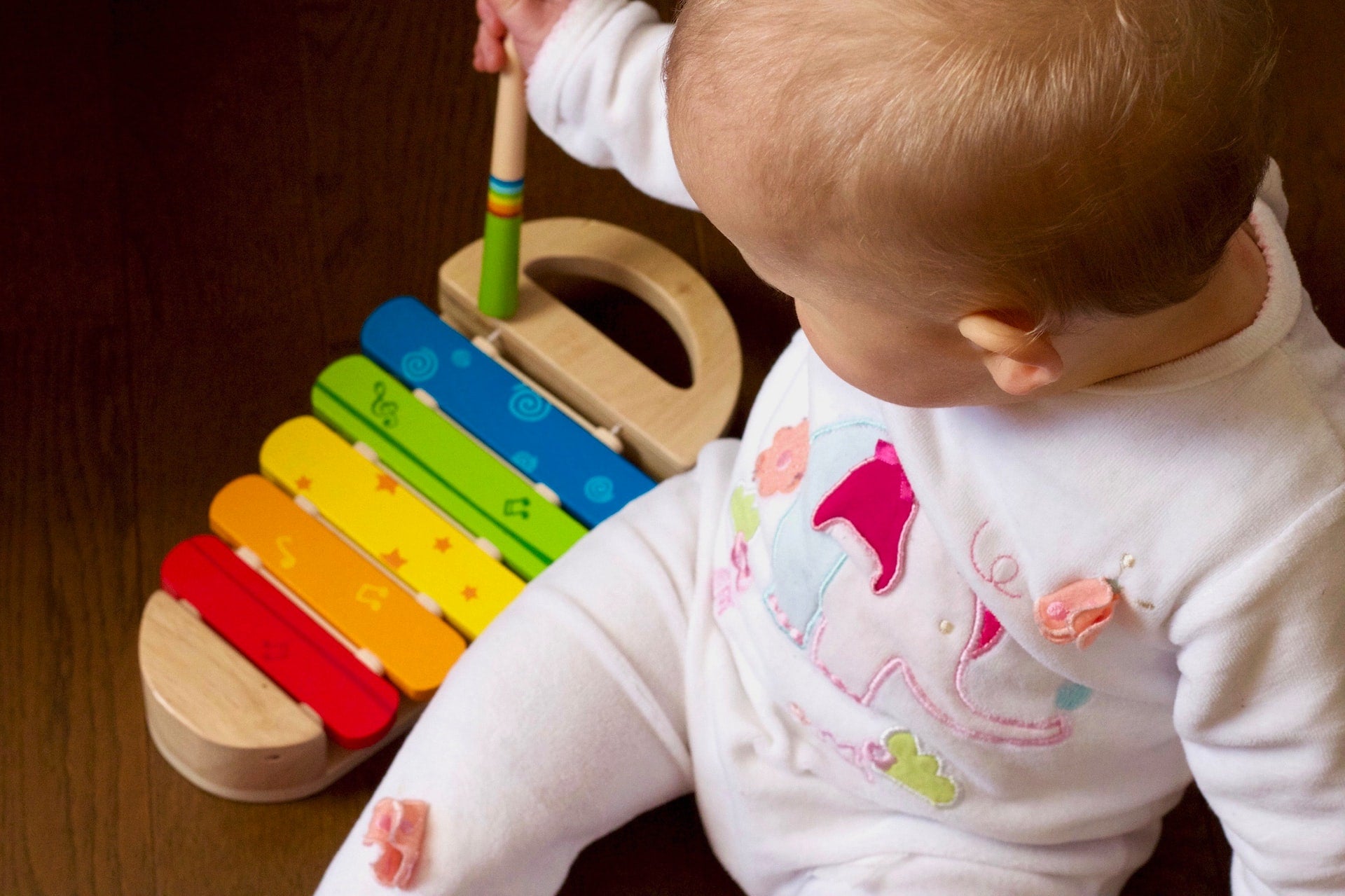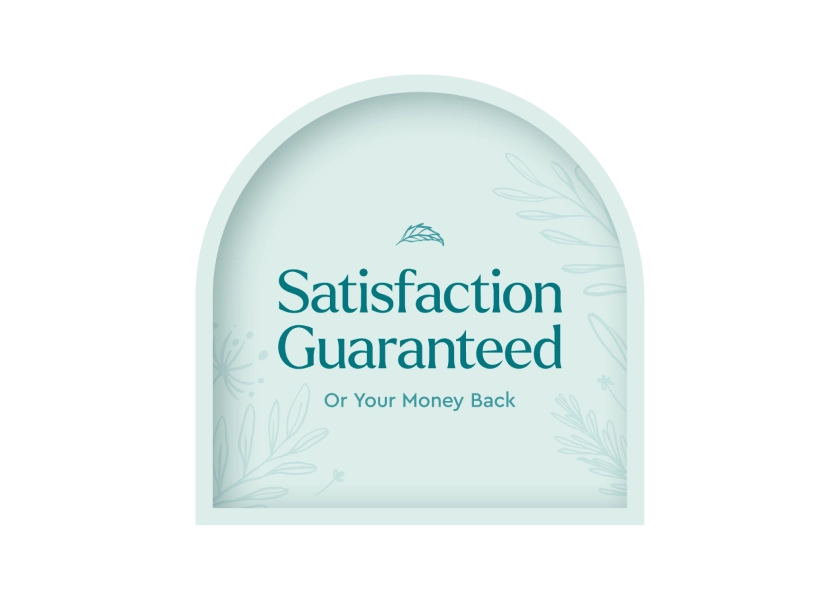As a new parent, ensuring the safety of your bundle of joy is at the top of your parenting list. However, from bottles to onesies to cleaning products, there’s a seemingly endless slew of ingredients to avoid in baby products.
Our article outlines potentially harmful chemicals in baby products that have been linked to health issues – and why you'll never find them in Puracy's lineup.
Harmful Baby Products Chemicals (alphabetical list):
1,4-Dioxane | Bisphenol A (BPA) | Bleach | Bronopol | Butylated Hydroxyanisole (BHA) | Chlorine | DMDM Hydantoin | Ethanolamines | Flame Retardants | Formaldehyde | Hydroquinone | Nanoparticles | Nonylphenol Ethoxylates (NPEs) | Oxybenzone | Padimate-O | Parabens | Perfluorochemicals (PFCs) | Phenoxyethanol | Phthalates | Polyacrylamide | Polyethylene Glycols (PEGs) | Quaternium-15 | Retinyl Palmitate | Sodium Lauryl Sulfate (SLS) & Sodium Laureth Sulfate (SLES) | Synthetic Fragrances | Talc | Toluene | Tributyltin (TBT) | Triclosan
Common Chemicals to Avoid in Baby Products
While this is in no way an exhaustive list of ingredients to avoid in baby products, these chemicals tend to crop up on “worst of” lists – and for good reasons.
1. Bleach

Bleach exposure can cause reactions like eye irritation, blurry vision, burning throat, chemical burns, and shortness of breath. As a highly reactive substance, it can also cause serious issues when combined with the wrong chemicals (e.g. ammonia, alcohol, acids). Even clothing washed in bleach can cause dermatological reactions in people with sensitive skin.
How to Avoid Using Bleach
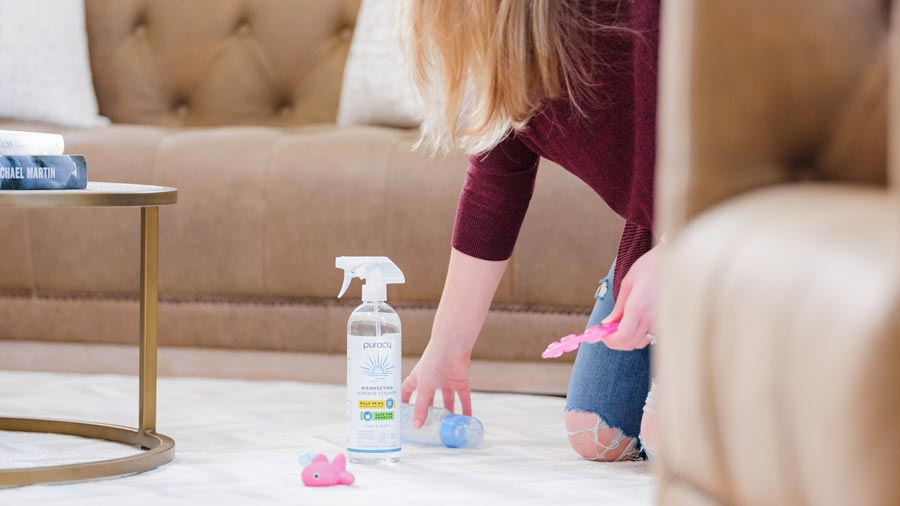
There are plenty of excellent ways to clean household surfaces and fabric with gentle, effective products:
- Whitening clothes without bleach can be done easily and efficiently.
- When used correctly, our hydrogen peroxide disinfectant kills more than 99.9% of germs, bacteria, and viruses. It also helps break down dirt, gunk, and grime.
2. Sulfates
Sulfates (like SLS and SLES) are incredibly good at removing dirt and oil from a wide variety of surfaces. You'll find that they're often used to increase foaming in bath and cleaning products.

But SLS can cause eye, skin, and respiratory irritation. It’s also harsh on sensitive skin and eczema – especially in concentrations greater than 2%. Unfortunately, concentrations can vary between 1%-30% in cleaners and personal products. This can be even higher for bubble baths and body washes.
SLS vs. SLES

Note: While SLES was developed to be gentler than SLS, the manufacturing process can create 1,4- dioxane, a potential carcinogen.
How to Avoid Sulfates
Opt for "sulfate-free"product labels and be on the lookout for the following ingredients:
- Sodium lauryl sulfate (SLS)
- sodium laureth sulfate (e.g. SLES, sodium lauryl ether sulfate)
- ammonium laureth sulfate (ALS)
- sodium stearyl sulfate
- sodium lauryl sulfoacetate (SLSA)
- sodium coco sulfate
Safe Puracy Products
Natural Baby Shampoo & Body Wash
3. Phthalates

Also known as phthalate esters, phthalates are artificial fragrance additives that appear in 75% of products with “fragrance” on the label. You'll also spot these petroleum byproducts in many plastic toys and food packaging.
Because they aren’t chemically bound to the polymer, phthalates tend to migrate to the substance’s surface and into our bodies. Numerous studies have linked exposure to phthalates to a wide variety of health issues, including: sex hormone disruption, reduced sperm count, and reproductive organ malformation.
Ways to Avoid Phthalates

Phthalates are known as “the everywhere chemical” – That means you’ll need to do some research when selecting baby products:
- Look for labels that clearly state “phthalate free.”
- Select fragrance-free items with transparent ingredient lists (like all of our baby essentials).
- Because phthalates are often used to plasticize PVC, opt for medical-grade silicone or natural substances for baby bottles, toys, etc.
4. Synthetic Fragrances

Synthetic fragrances are much cheaper than plant-derived sources. Often sourced from petroleum by-products, substances include benzene derivatives and aldehydes (both known carcinogens), as well as toluene (a neurotoxin).
If your personal care products include the term "fragrance", you may not know what ingredients are being used. Aside from color additives, companies aren't actually required to share fragrance ingredient details (including safety information) with the FDA. This is thanks to “trade secrets.”
How to Avoid Synthetic Fragrances
Stick to fragrance-free products with clear ingredient lists, and ones that are especially formulated for sensitive baby skin. Whenever you choose a newborn baby care product, ensure that it's sourced from naturally-derived fragrances (like organic essential oils).
5. Bisphenol A (BPA)
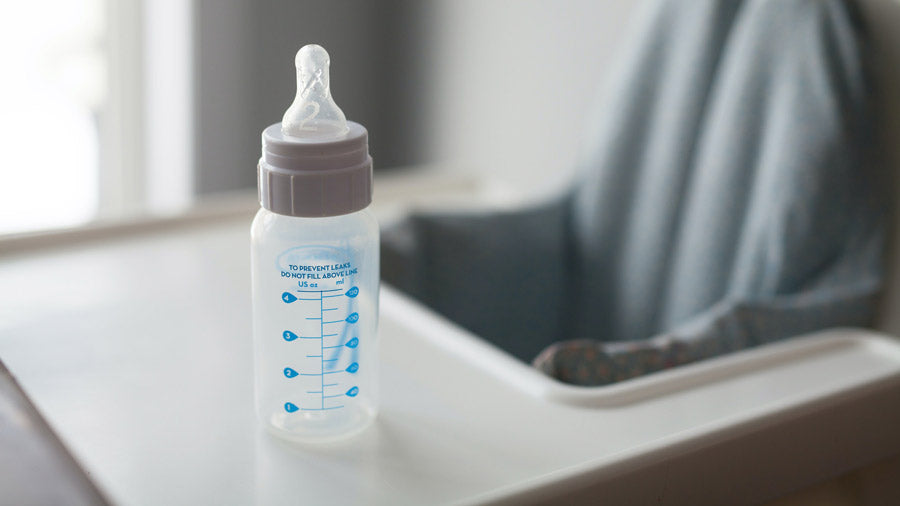
An increasing number of studies show that babies consume a shocking number of microplastics every day. The biggest baby products to avoid are baby bottles and canned foods that use bisphenol A (BPA).
Consumption levels rise dramatically when BPA-based products are heated up and/or scratched. Even exposure at lower doses has been linked to an increased risk of:
How to Avoid BPA
Since BPA resins often coat the inside of food cans, try to purchase food in glass containers – or create your own baby food at home. More importantly, avoid heating plastics in the microwave.

If you choose plastic items, avoid polycarbonate plastics (which may be marked with ‘PC’) and opt for polypropylene products (e.g. PP, plastic #5). You can also select “BPA-free” products.
Note: Some plastics marked with recycle codes #7 and #3 may still contain BPA.
6. Talc

Commonly used in baby powder to prevent chafing and calm diaper rash, multiple studies have shown that naturally-occuring asbestos has been known to contaimate talc during the manufacturing process.
The Easiest Way to Avoid Talc
We recommend using talc-free baby powder to safely soothe your baby’s behind and sidestep chafing issues. Cornstarch is another excellent talc alternative.
7. Parabens

Parabens are used to extend the shelf lives of personal care products. While they’re allowed in the United States, parabens are banned in the European Union.
From seemingly innocuous skin irritation to serious reproductive organ dysfunction and fertility issues, infant exposure to parabens has also been linked to long-term weight issues during the first eight years of life.
How to Find Paraben Free Baby Products
Many paraben-free baby products include this status on labels, but you can also check for the following chemicals: methylparaben, butylparaben, propylparaben, ethylparaben.
Pro Tip: Opt for baby products that utilize natural, plant-based preservatives (like caprylyl glycol and gluconolactone).

